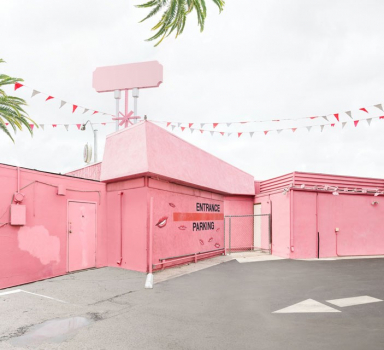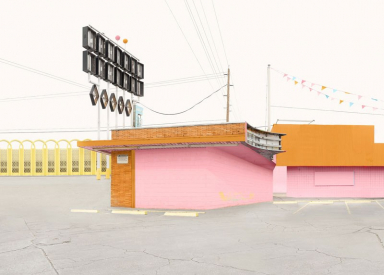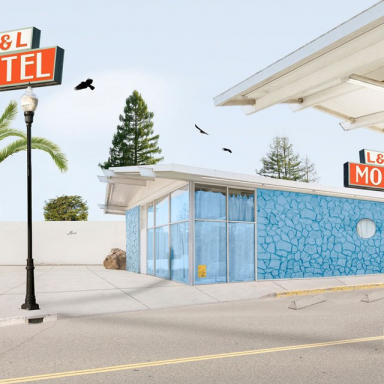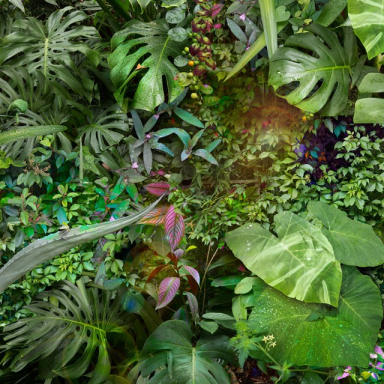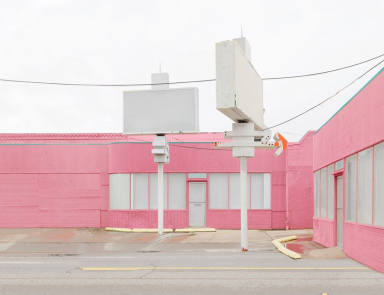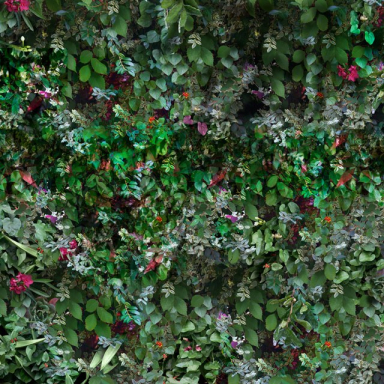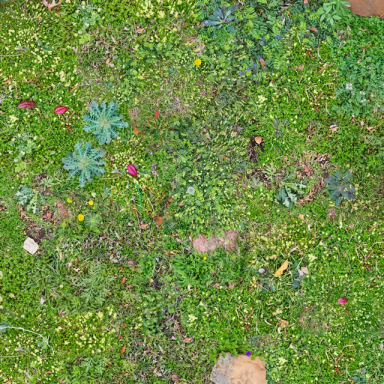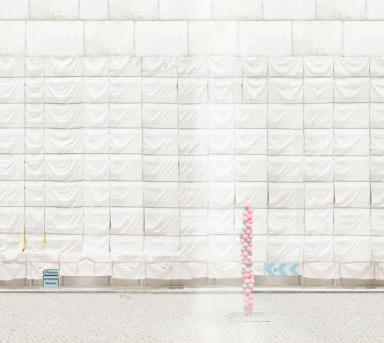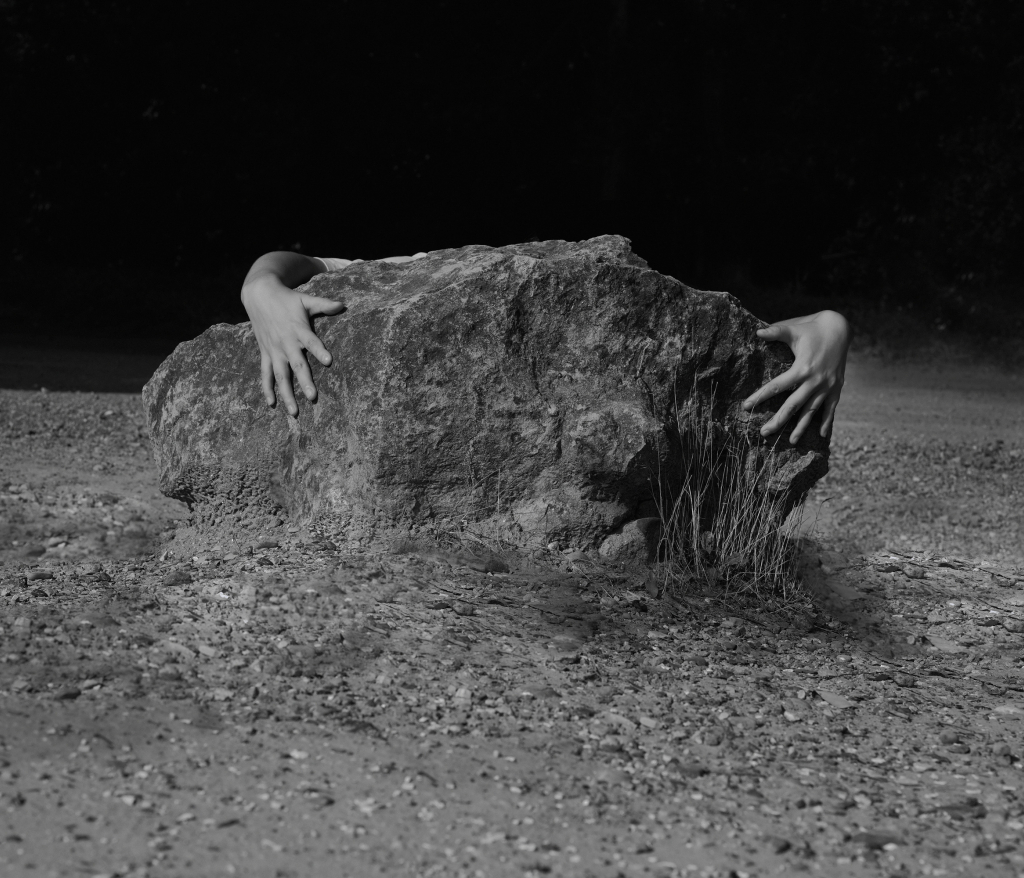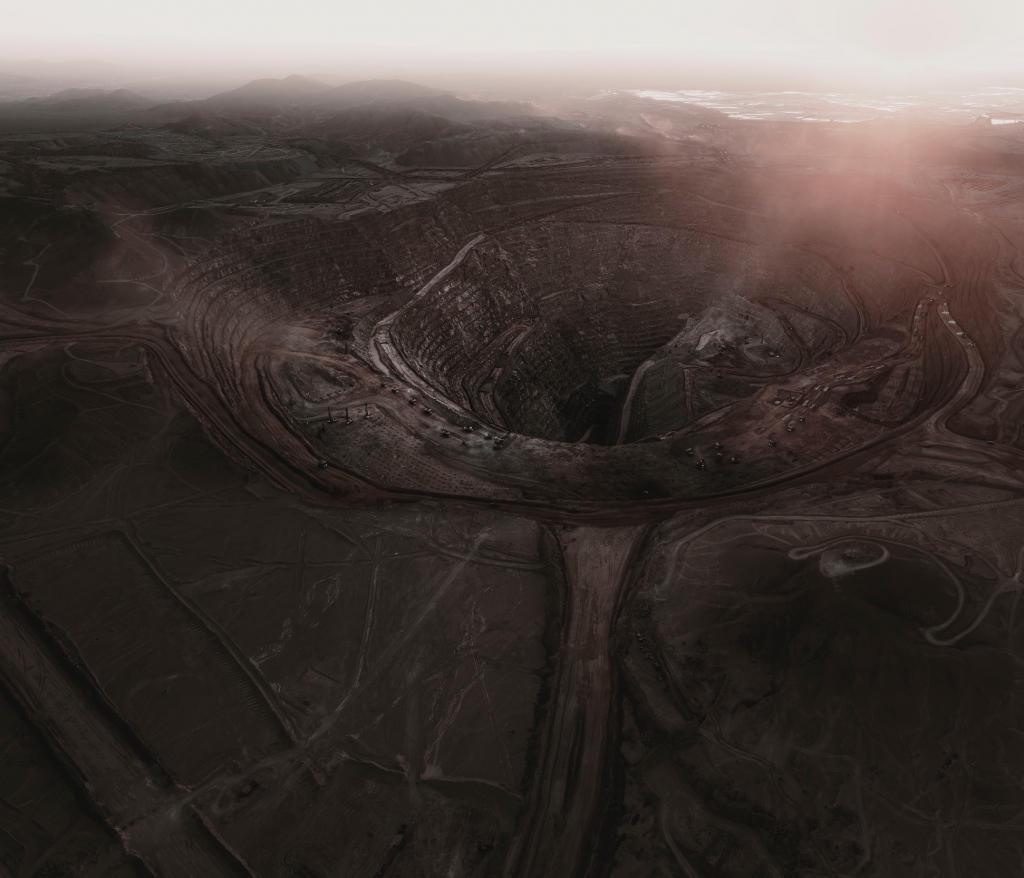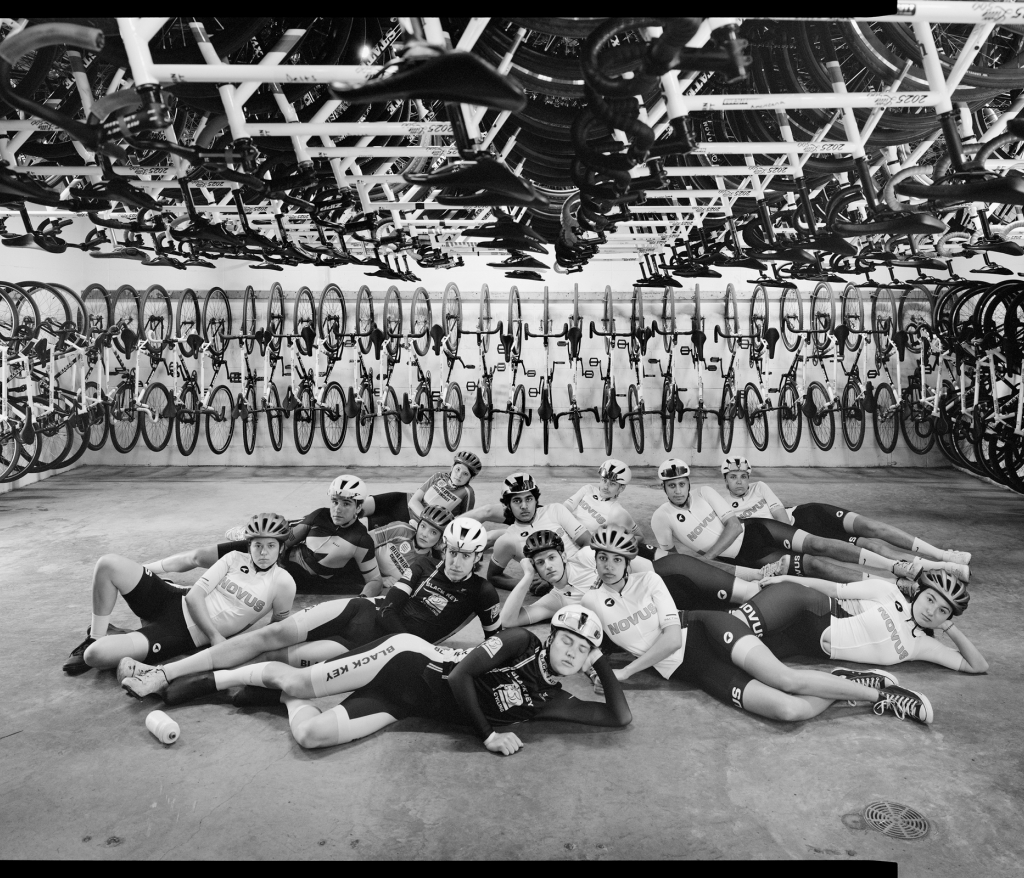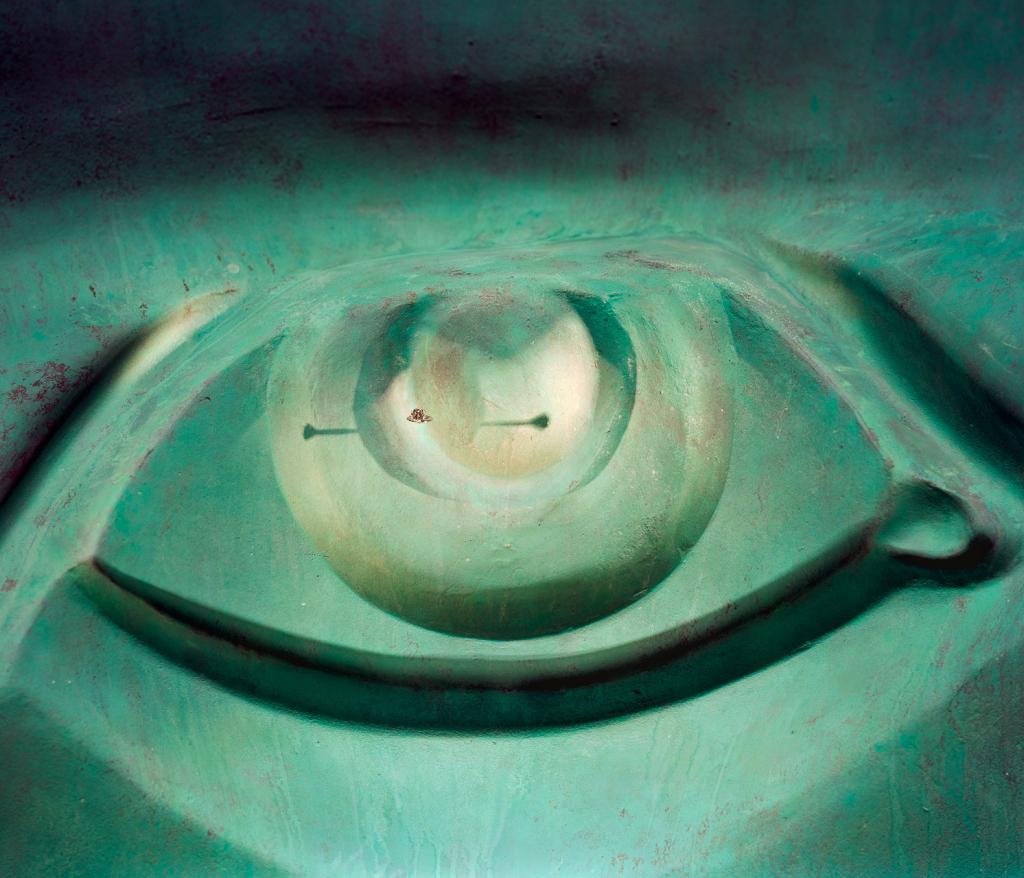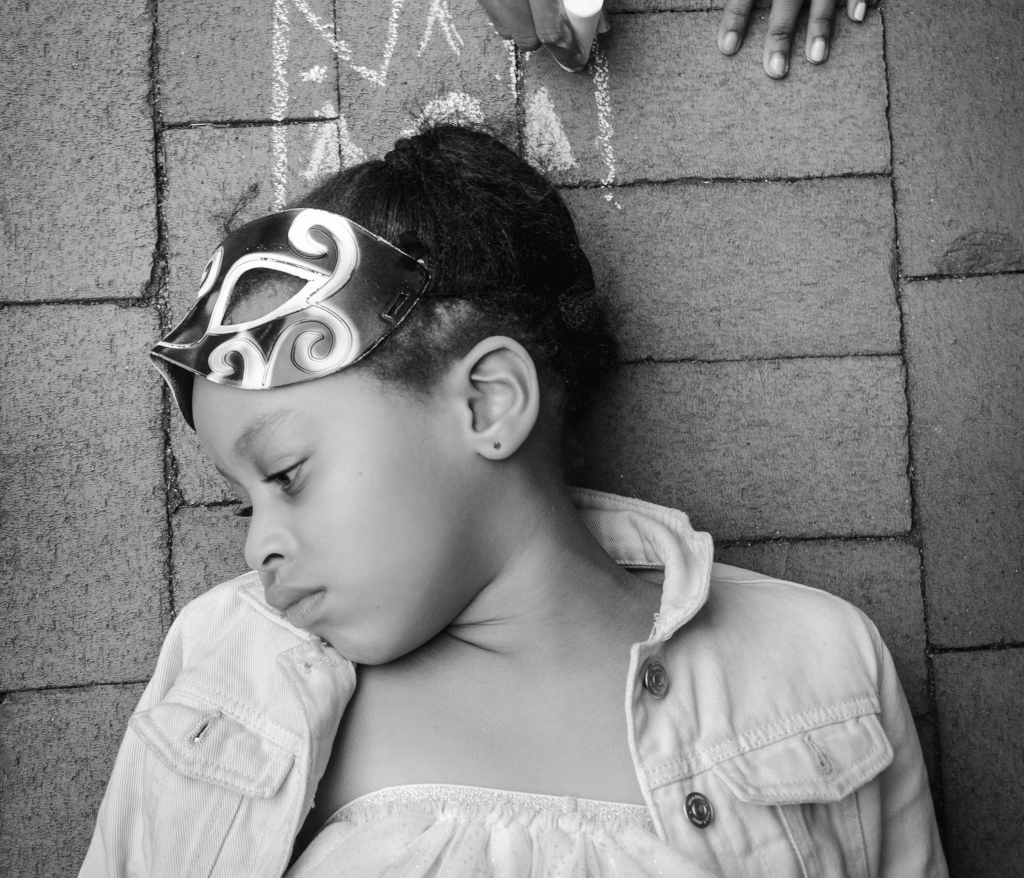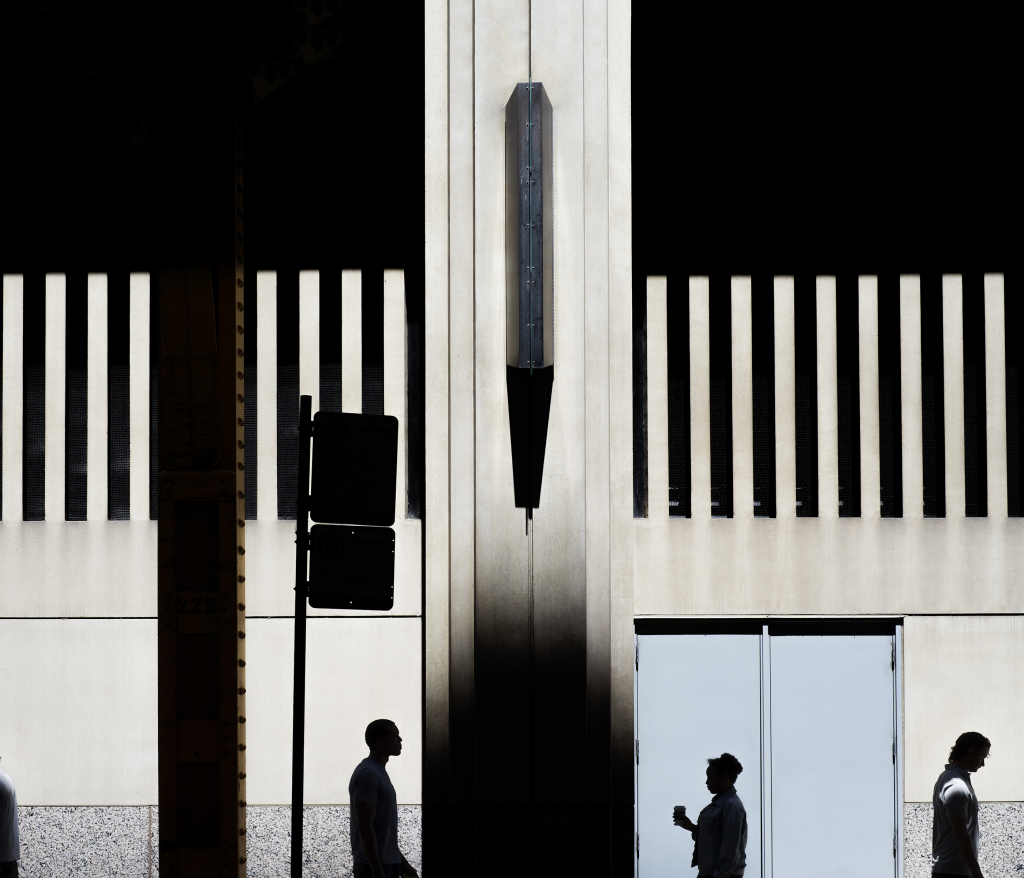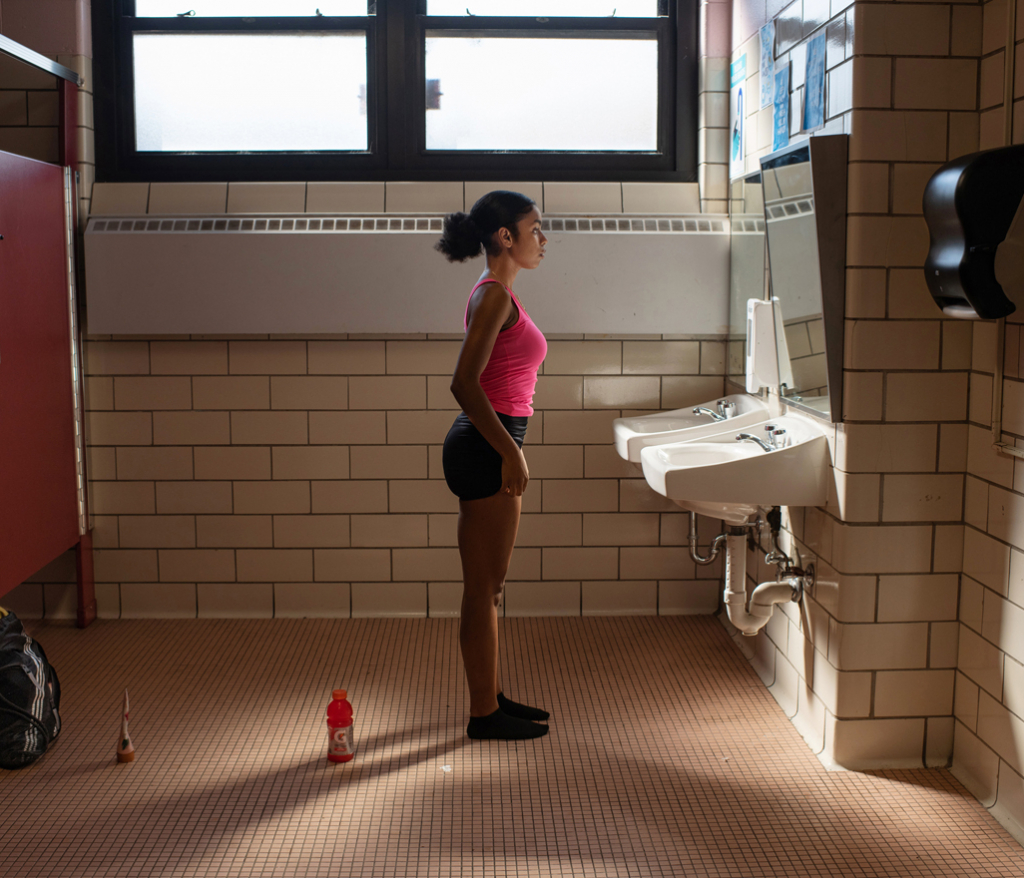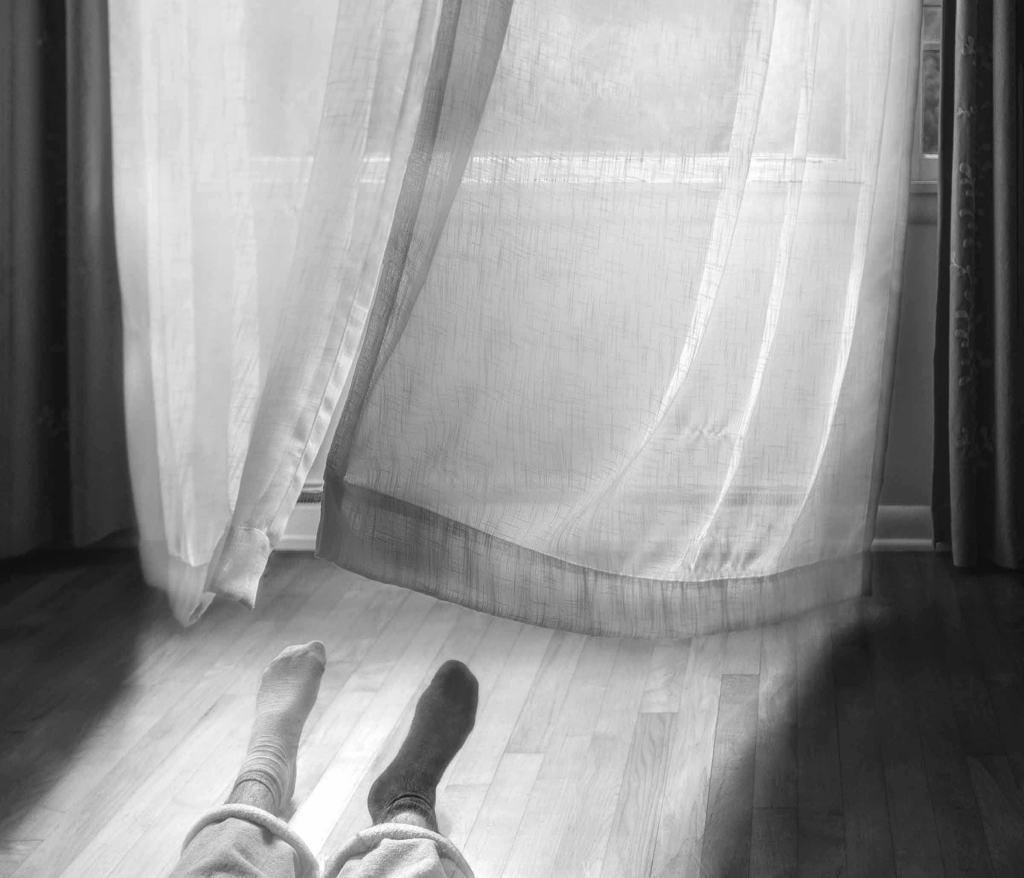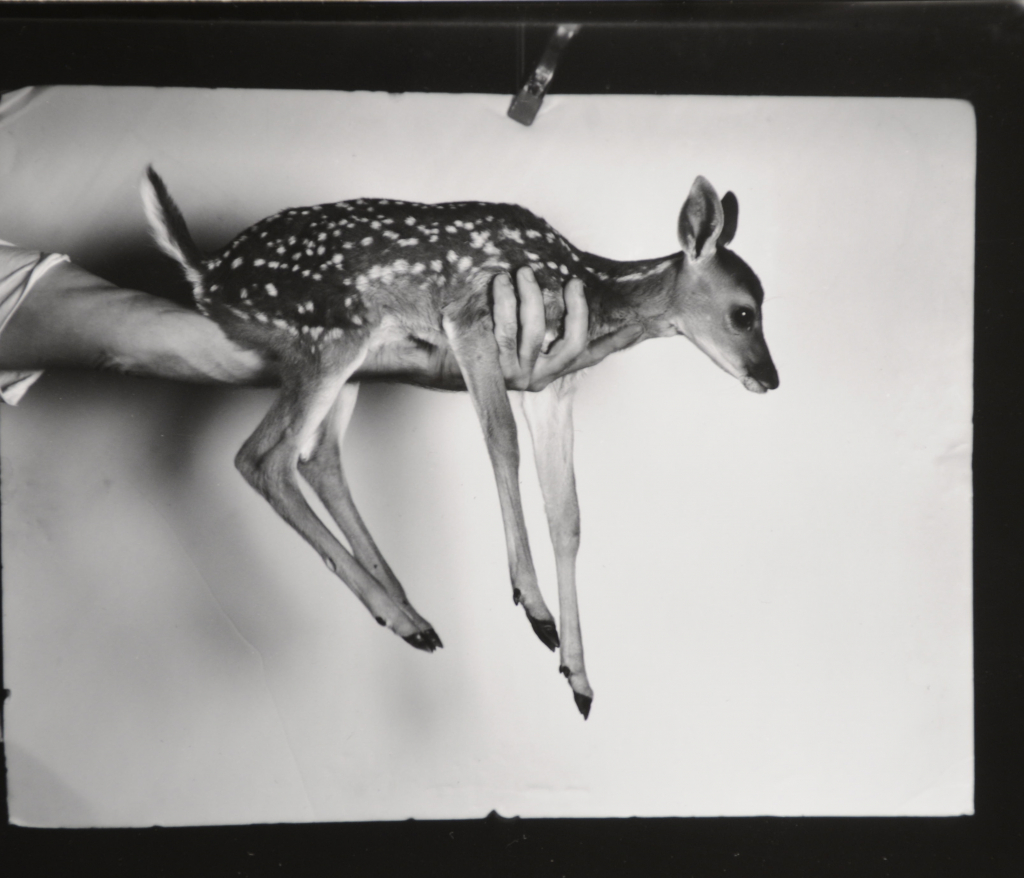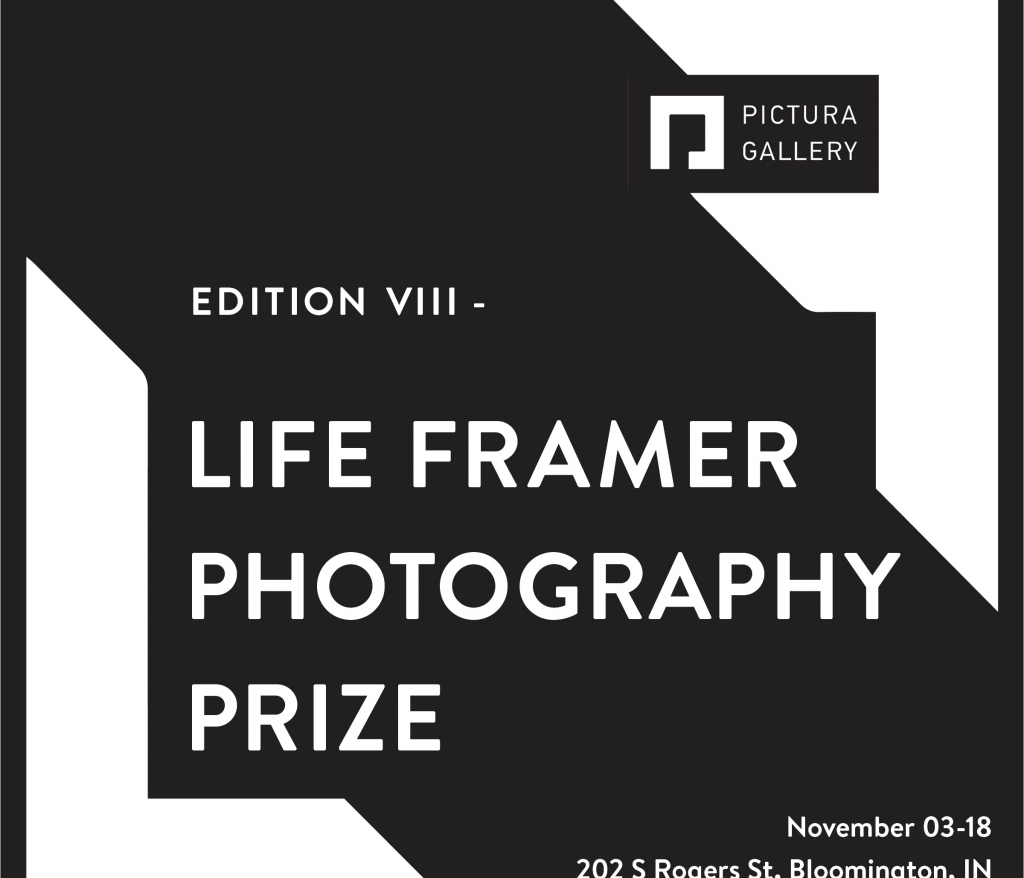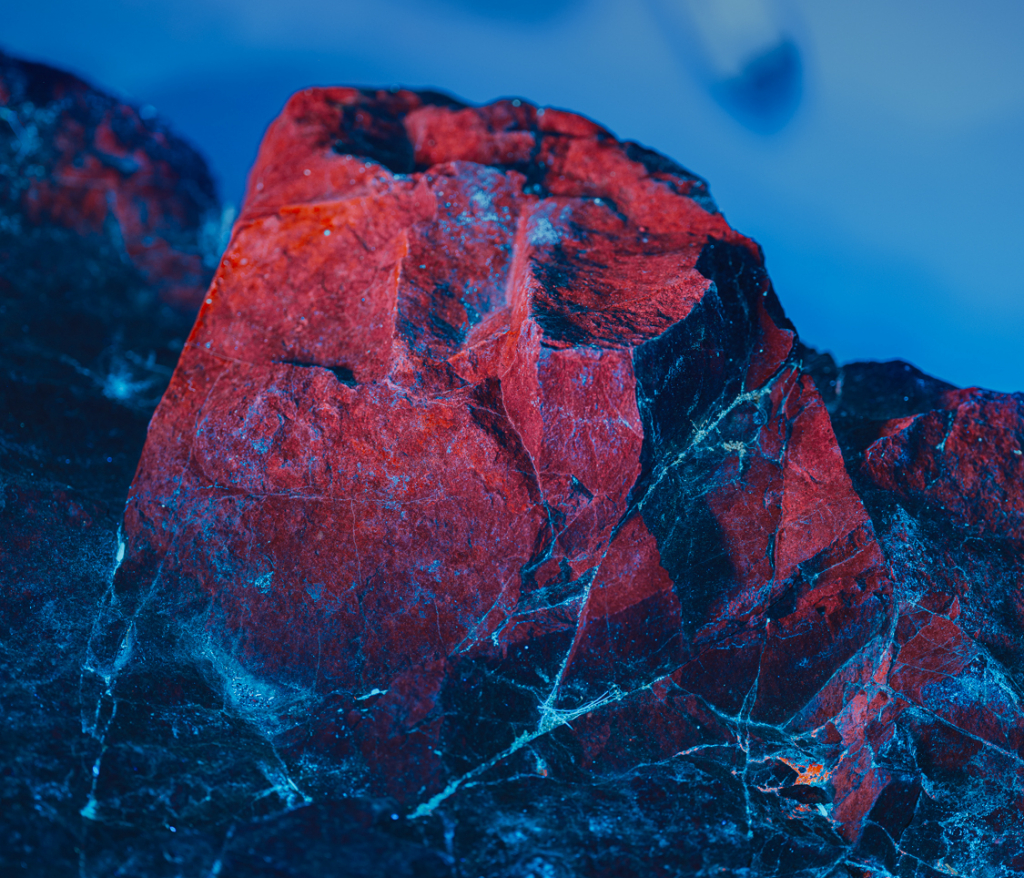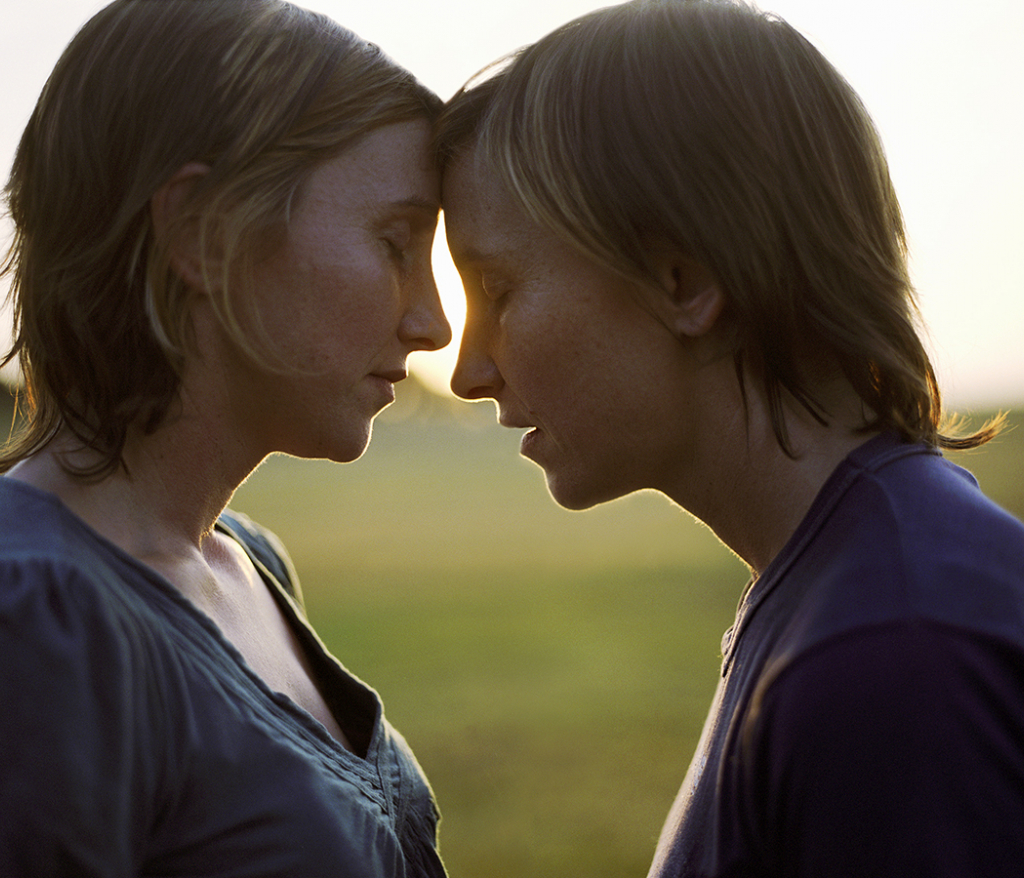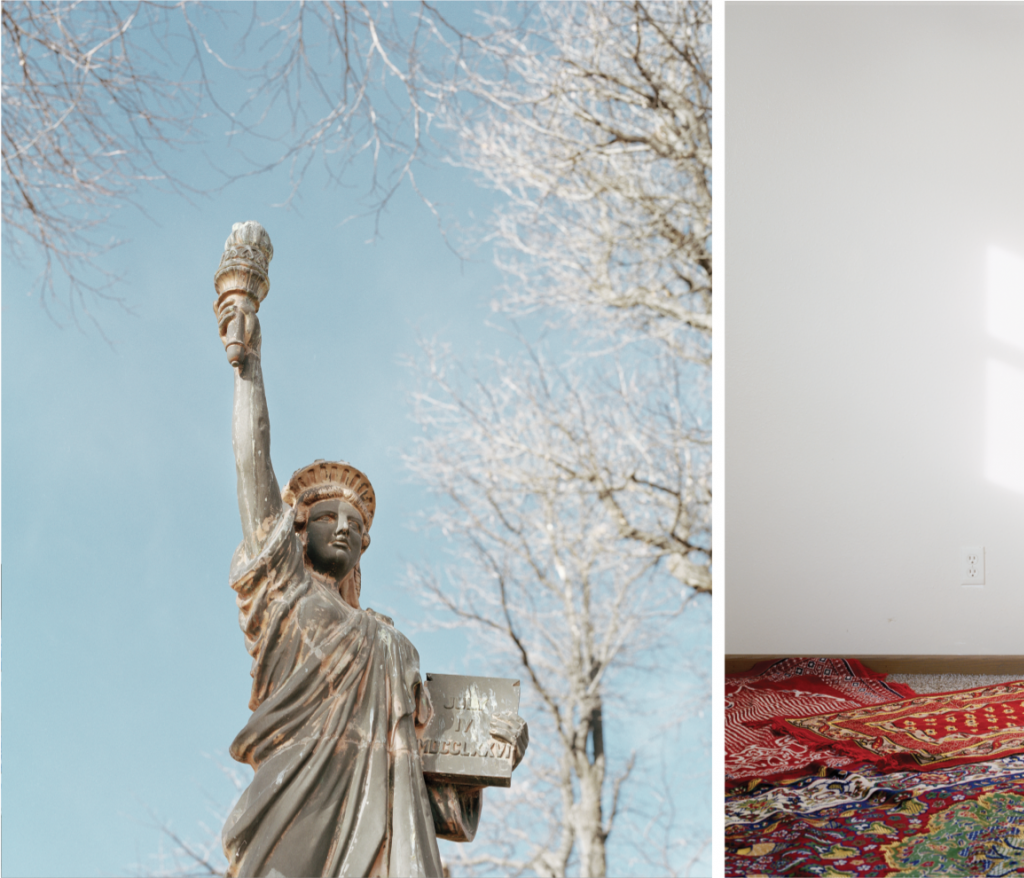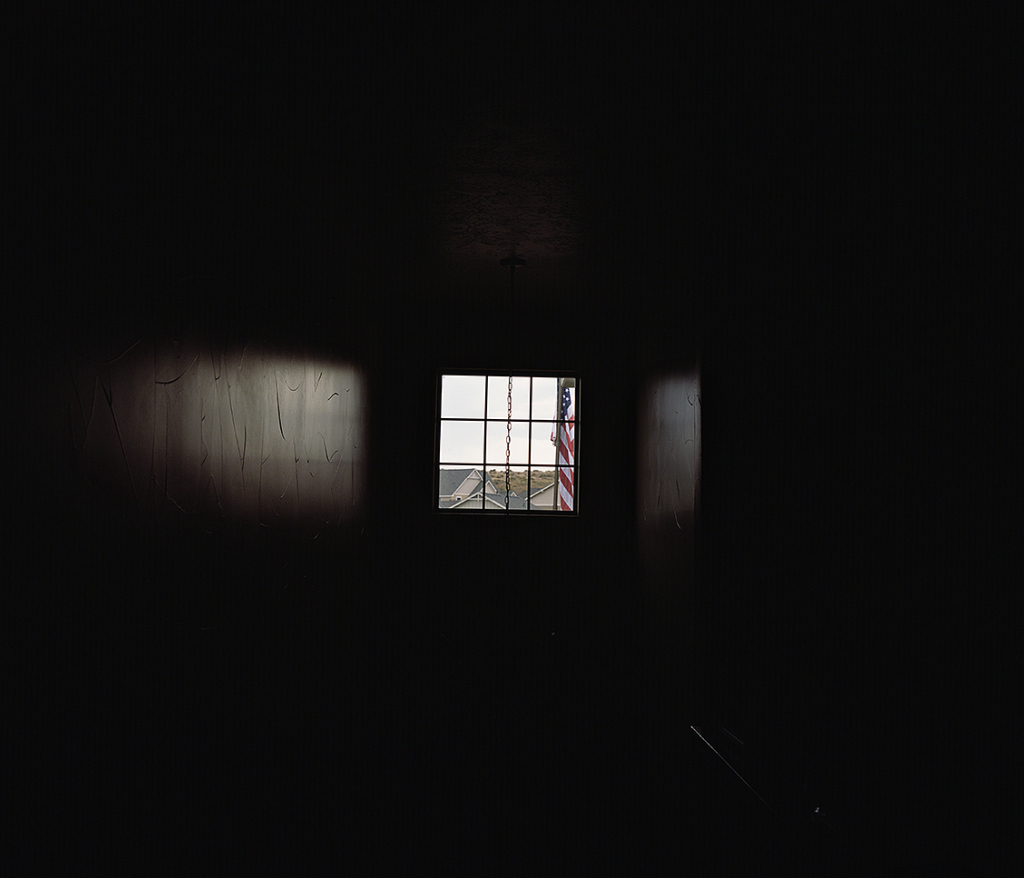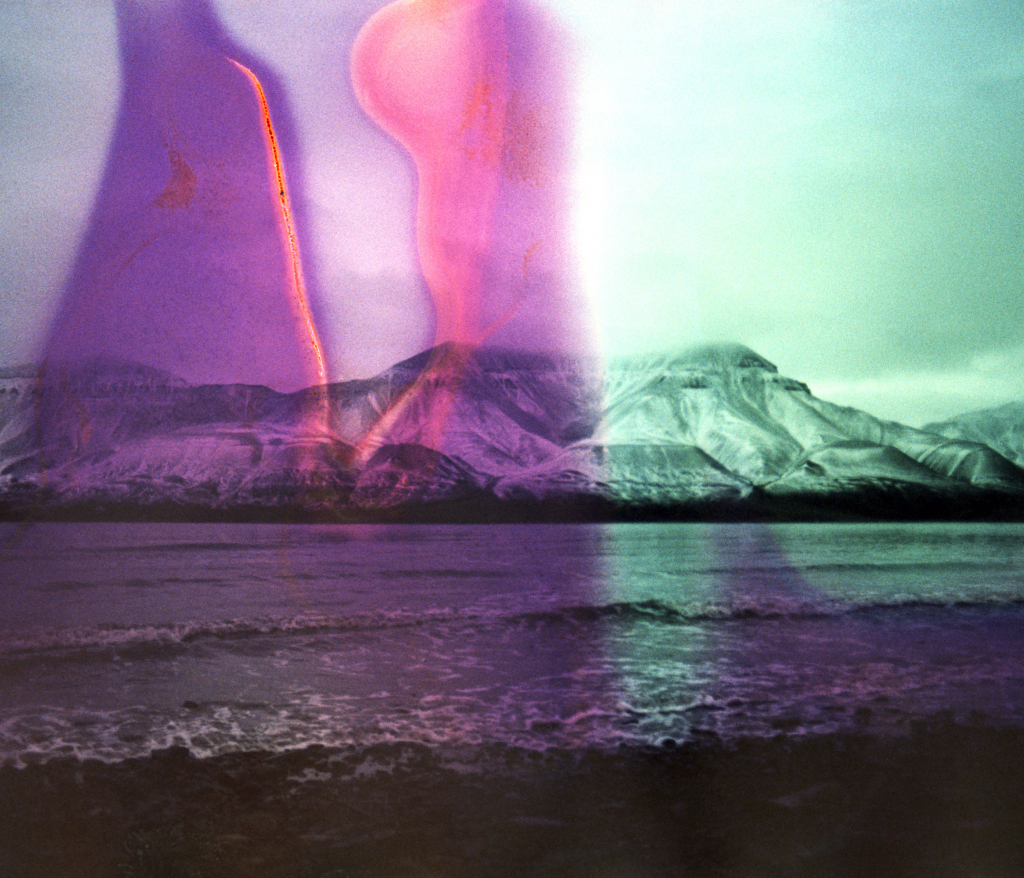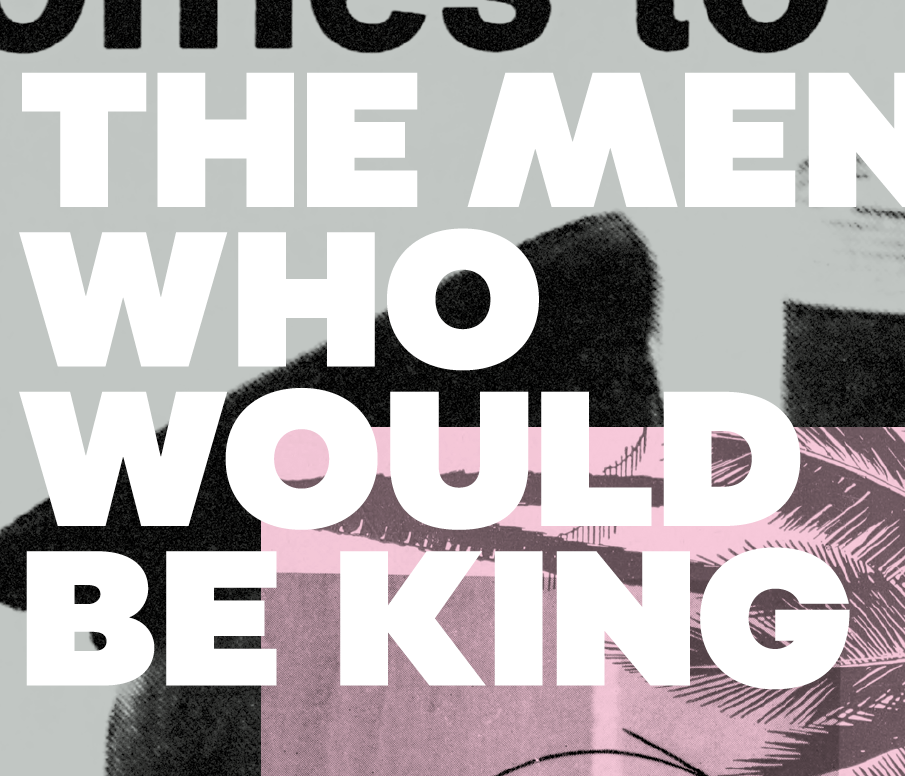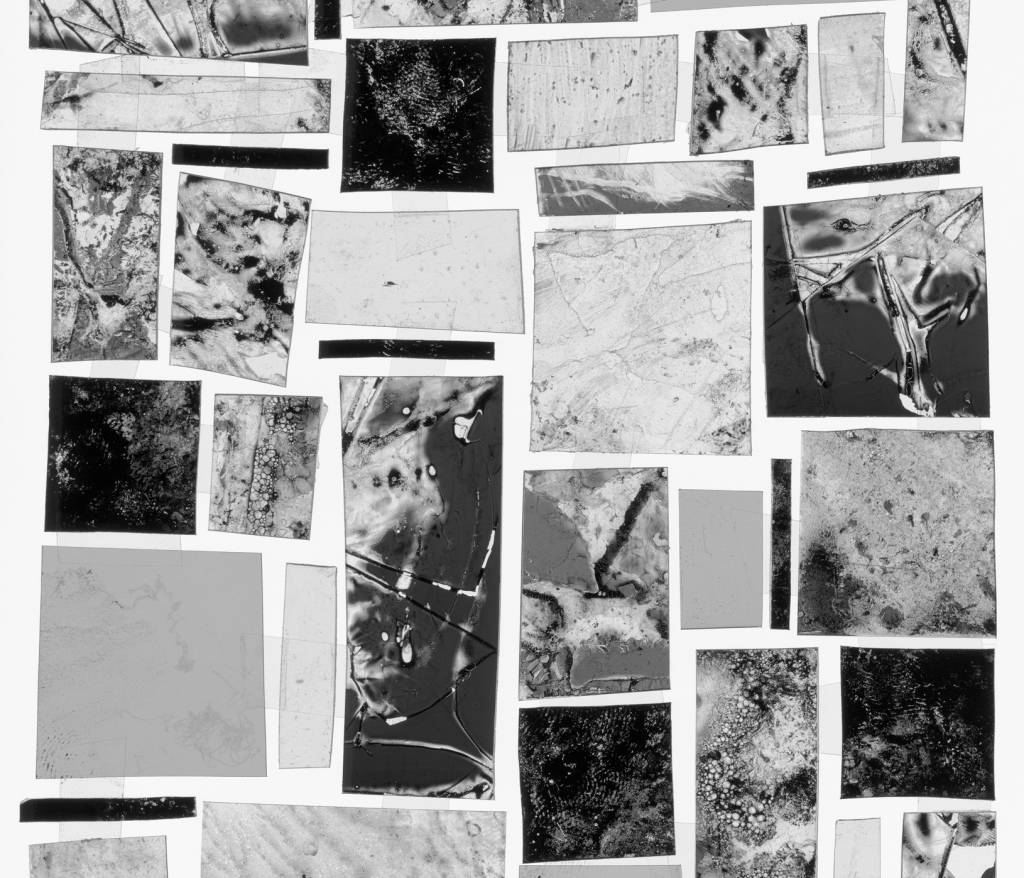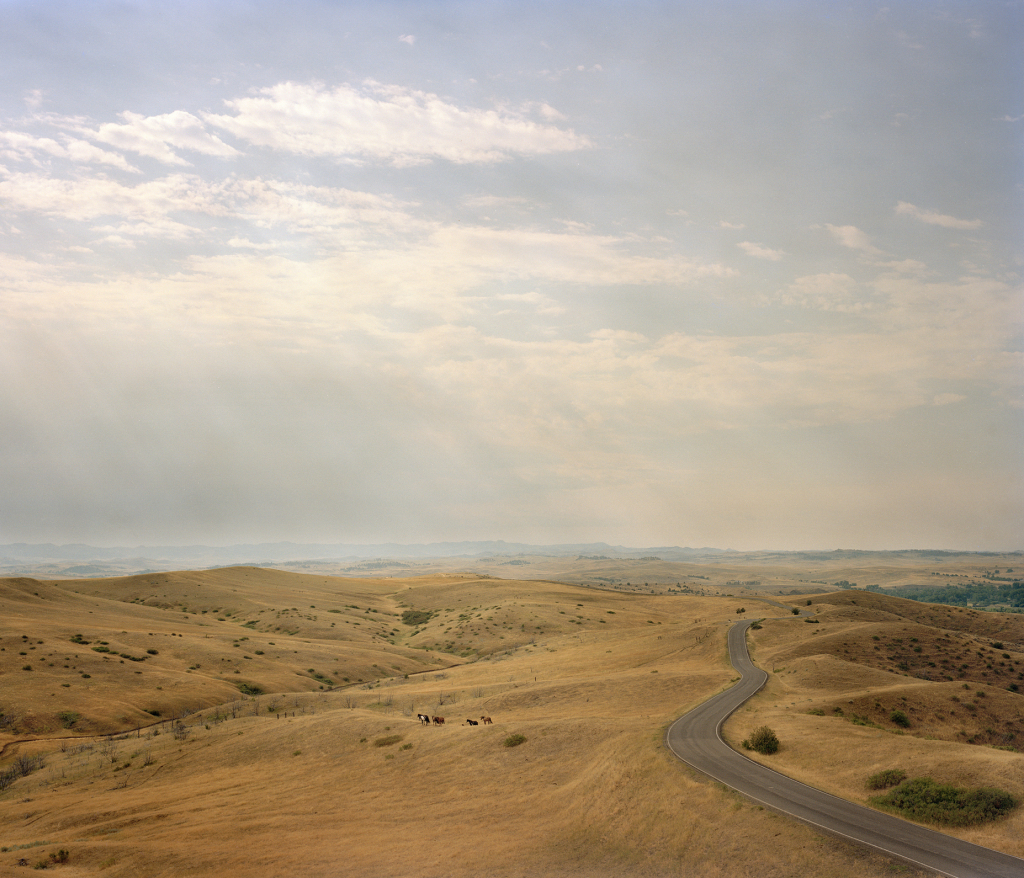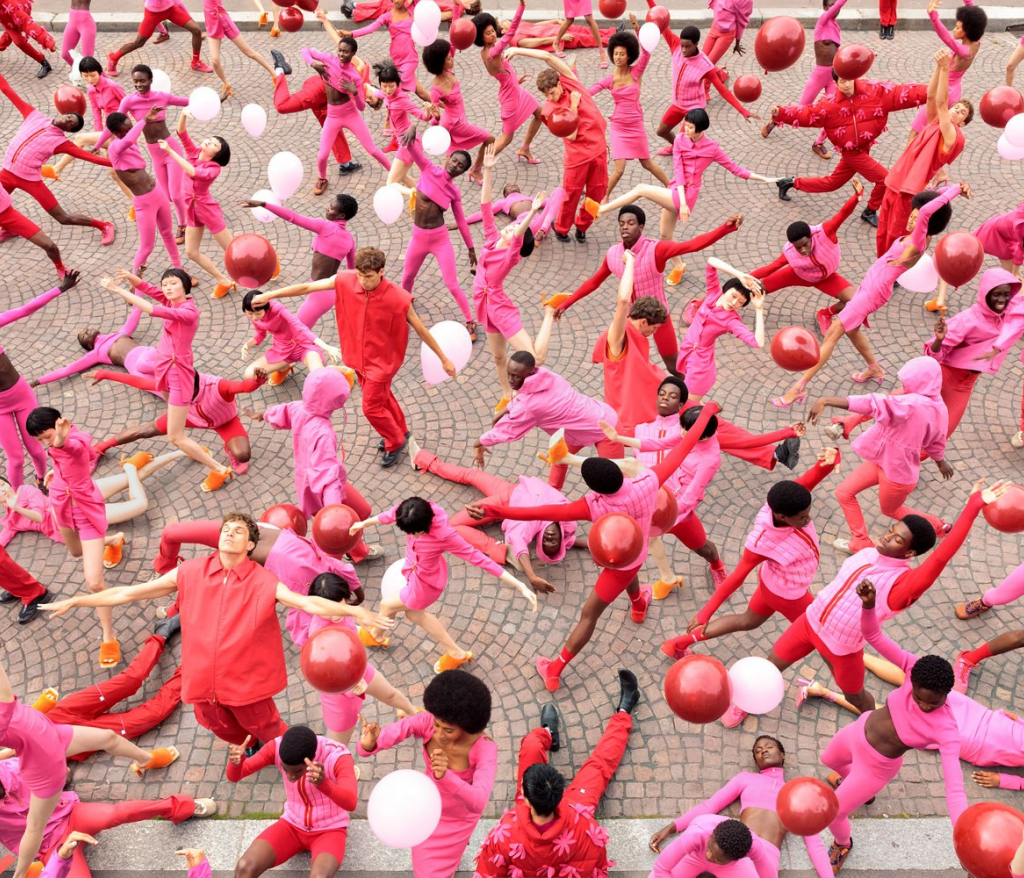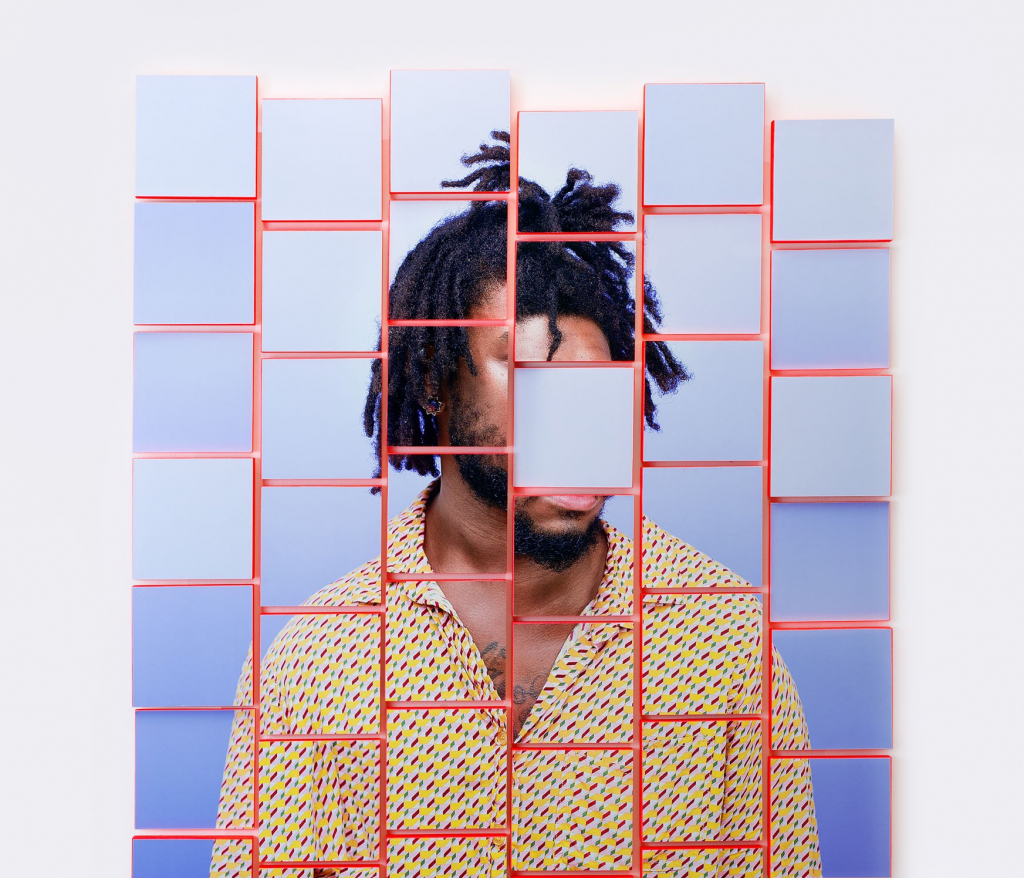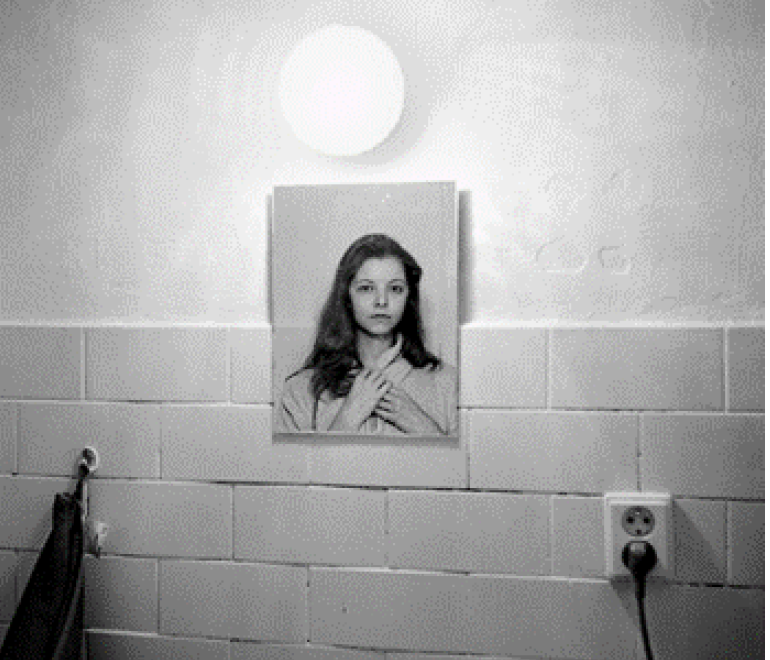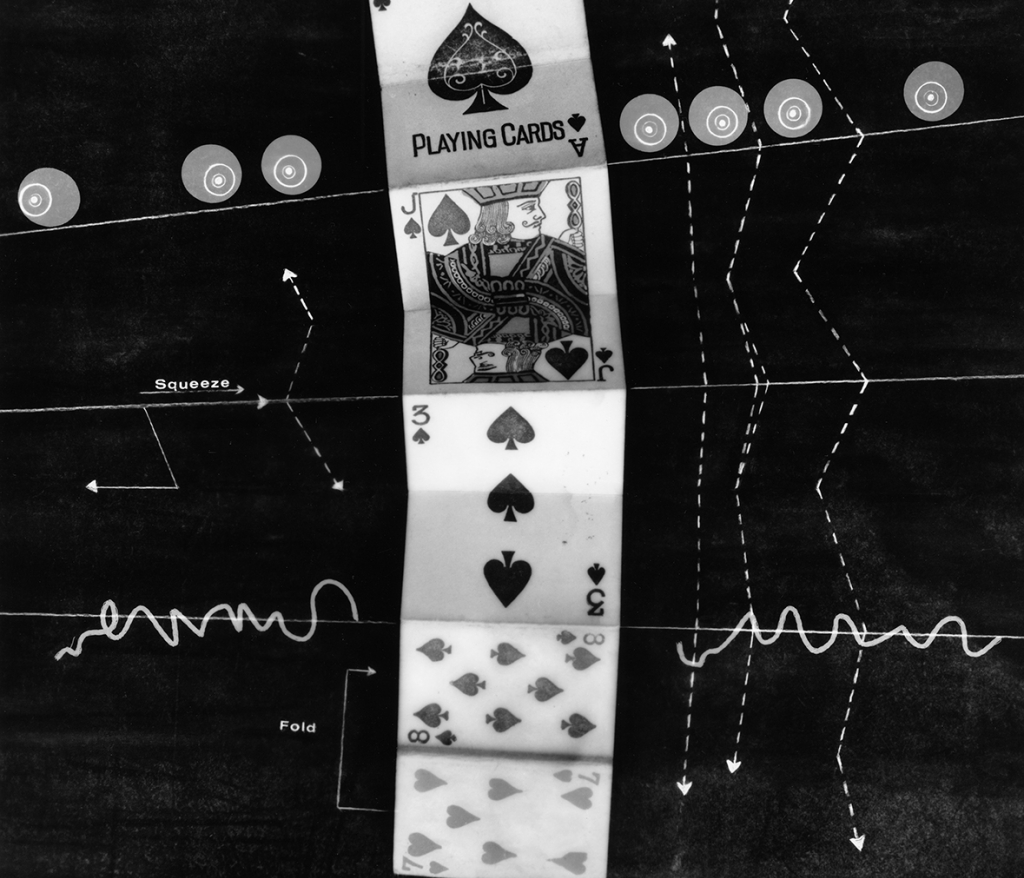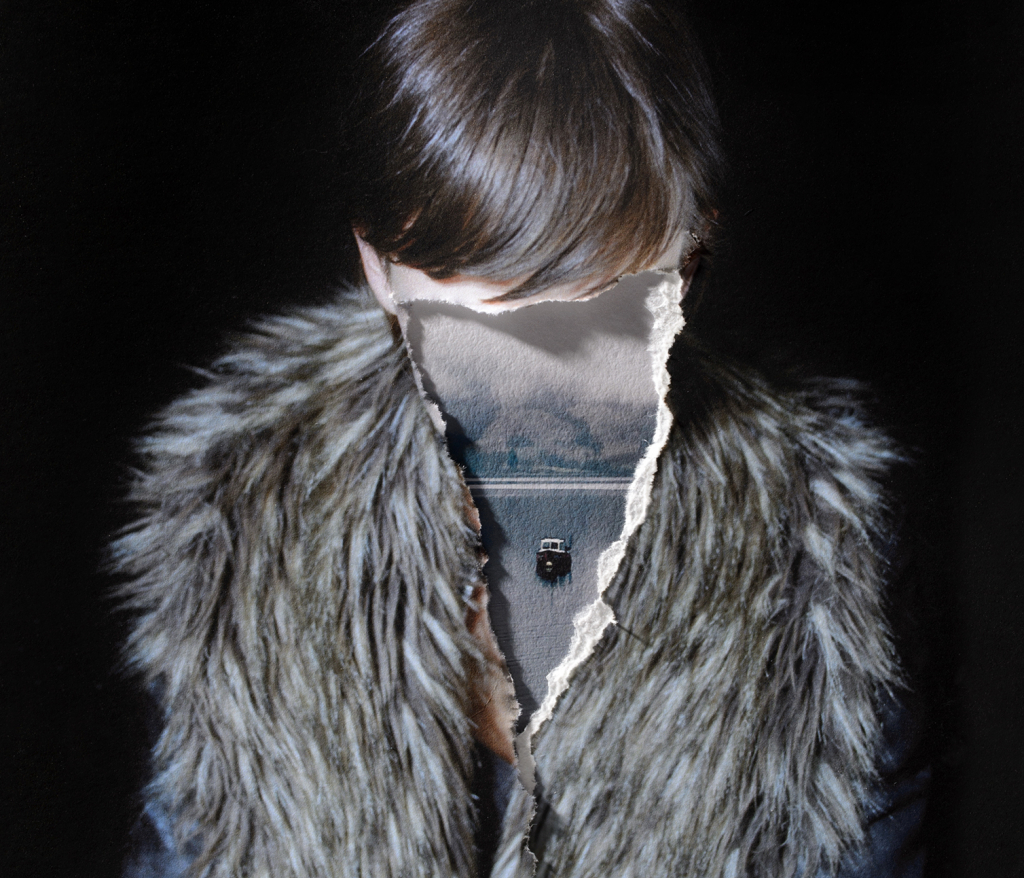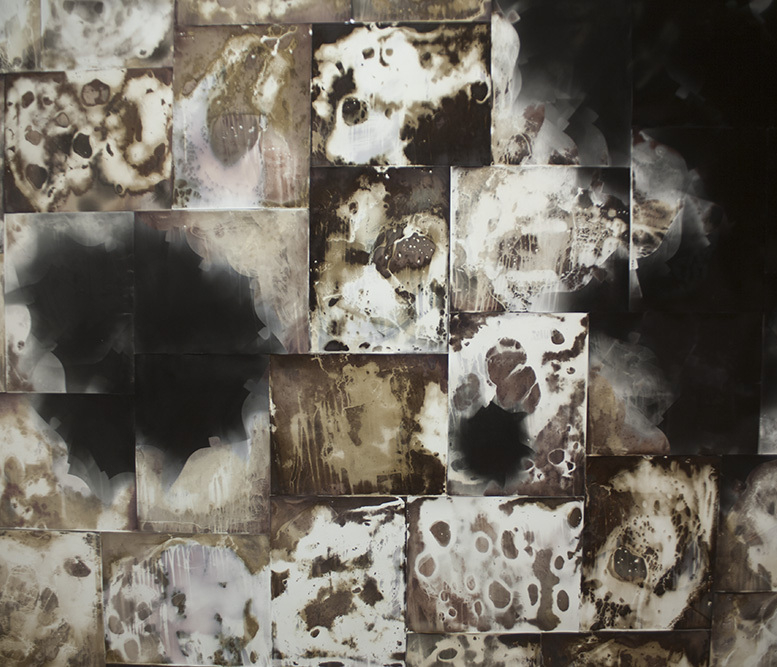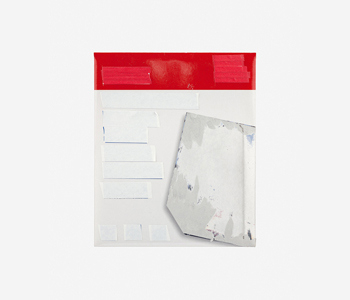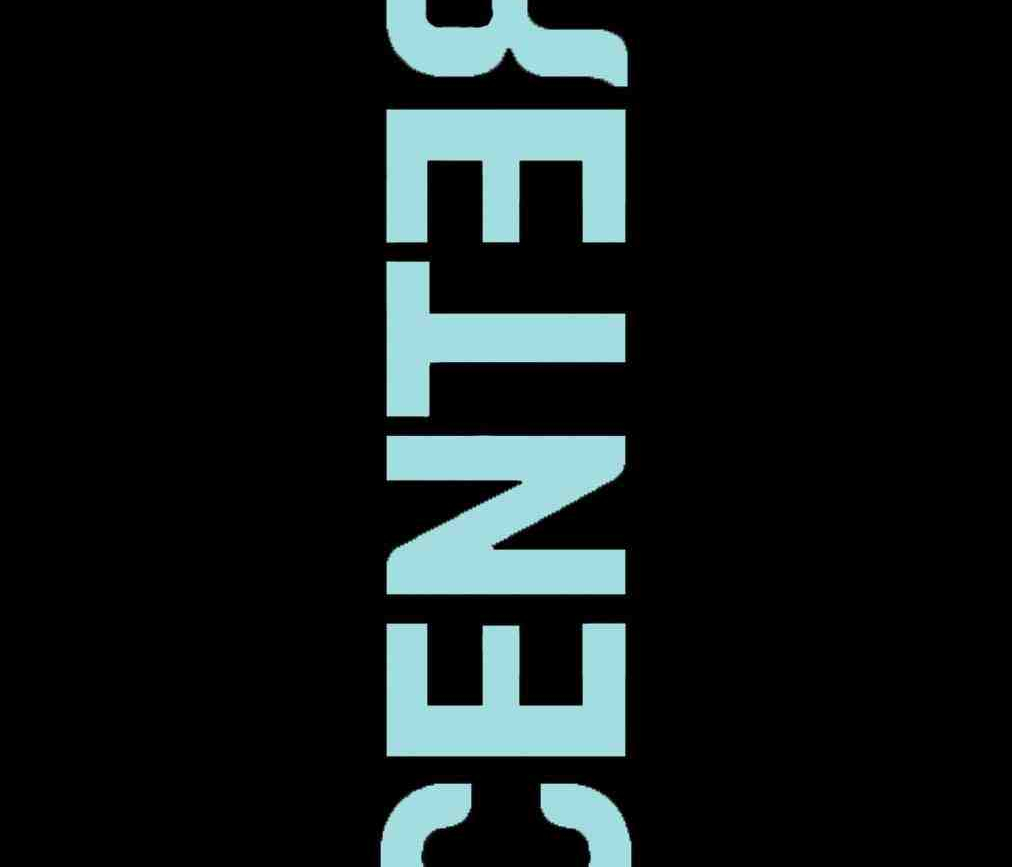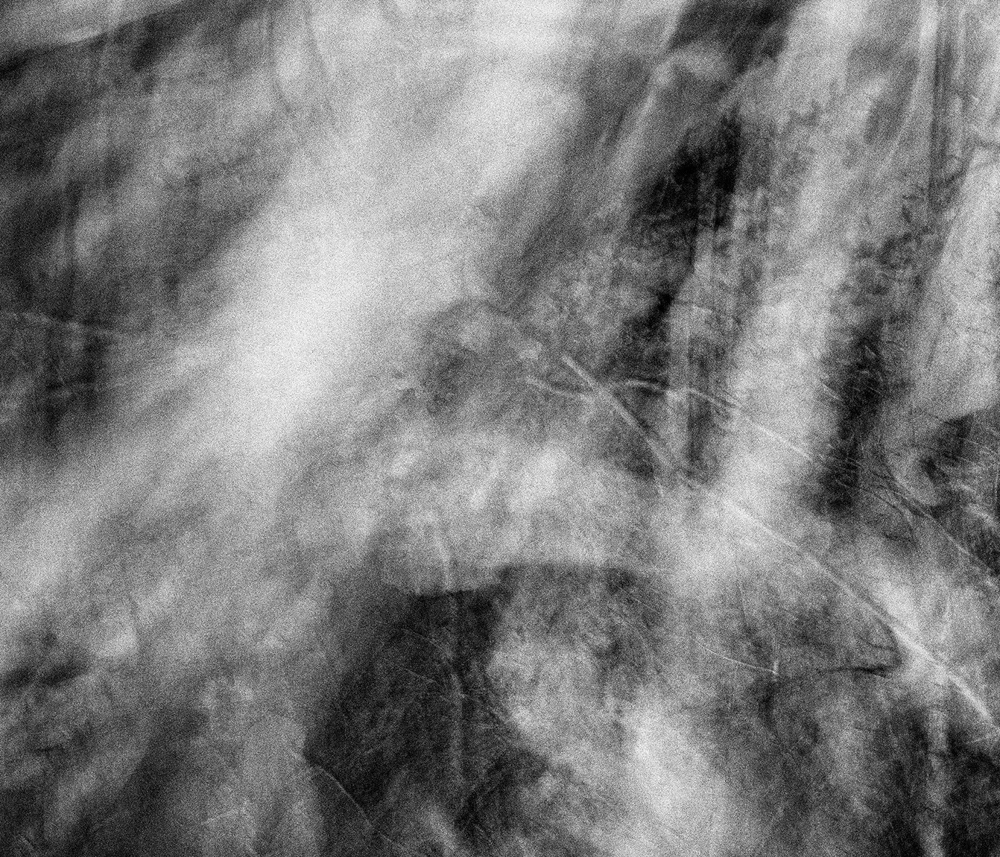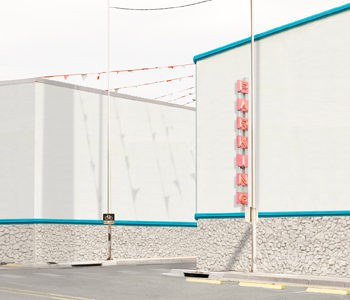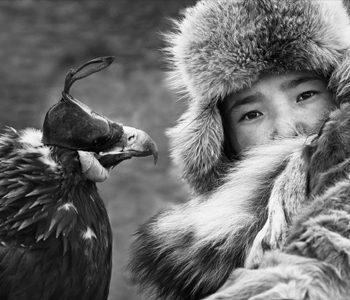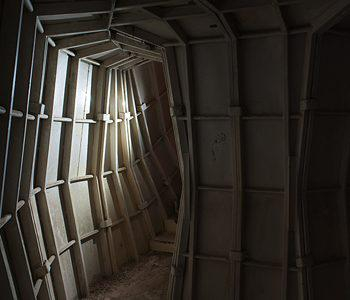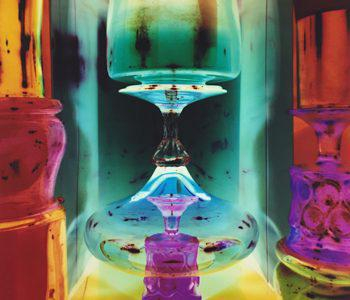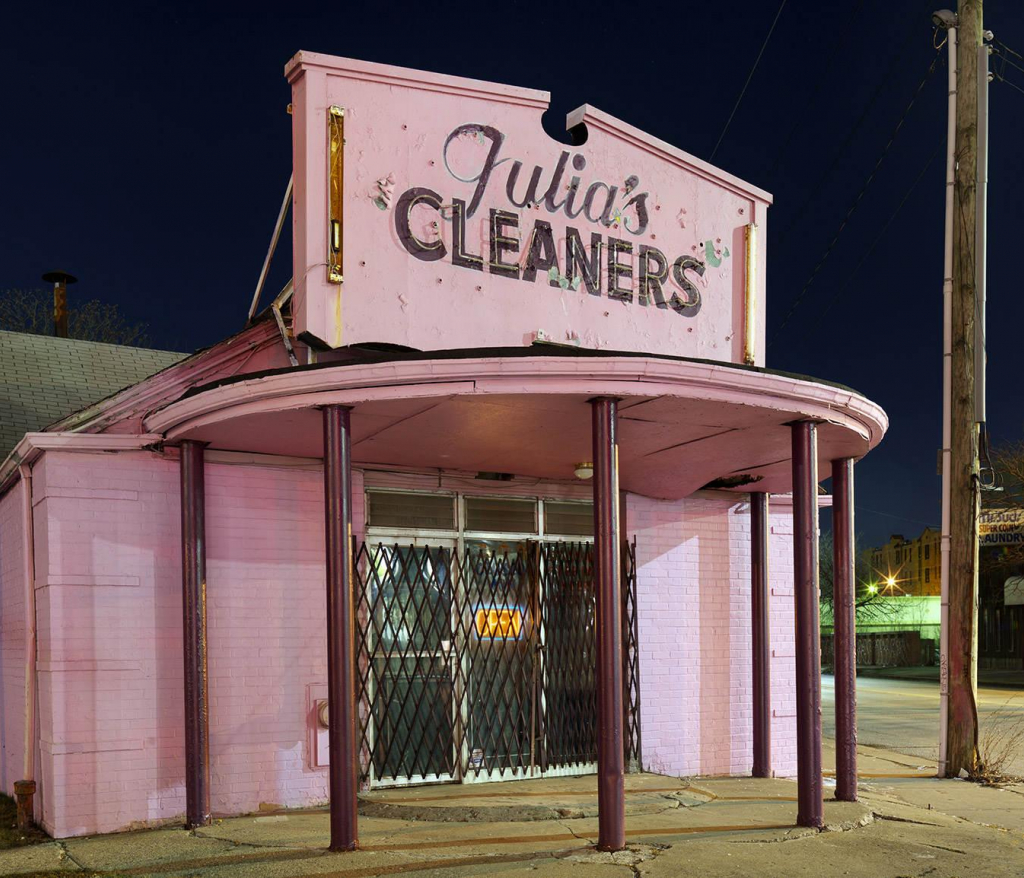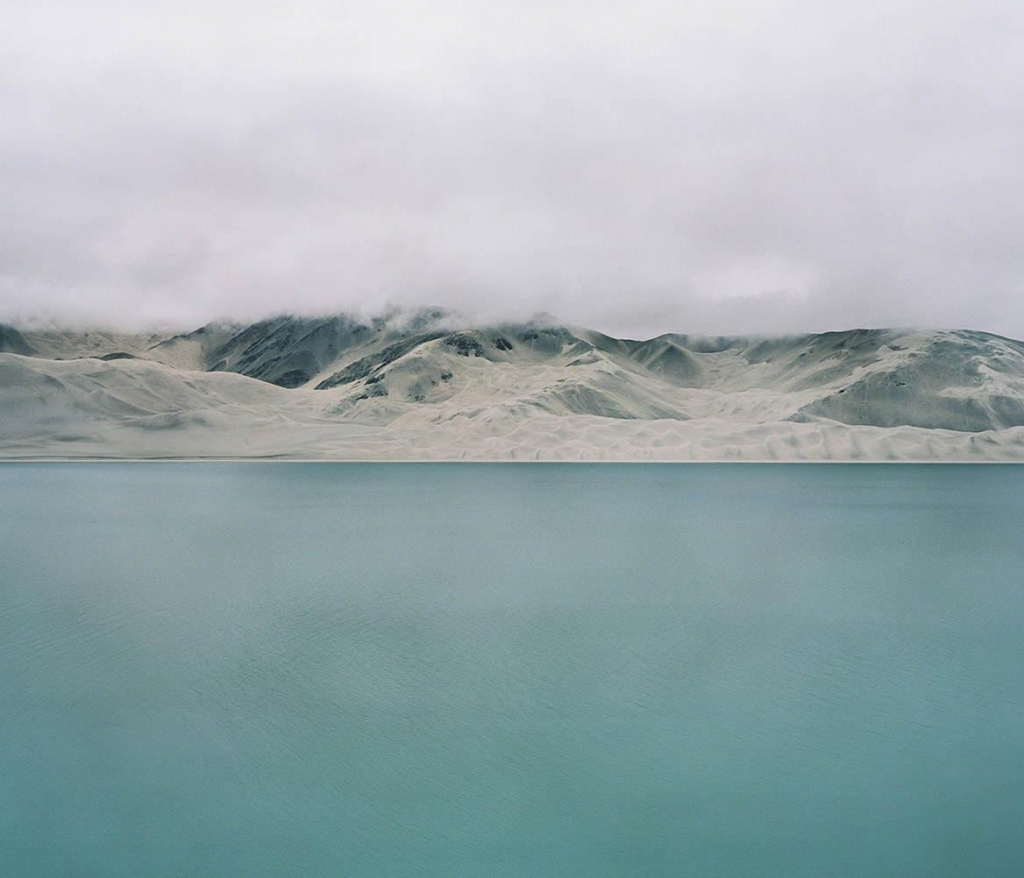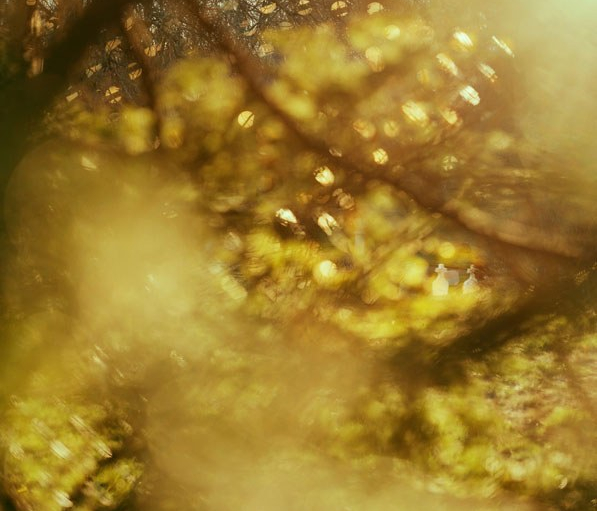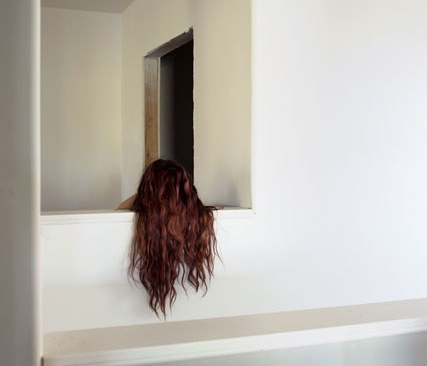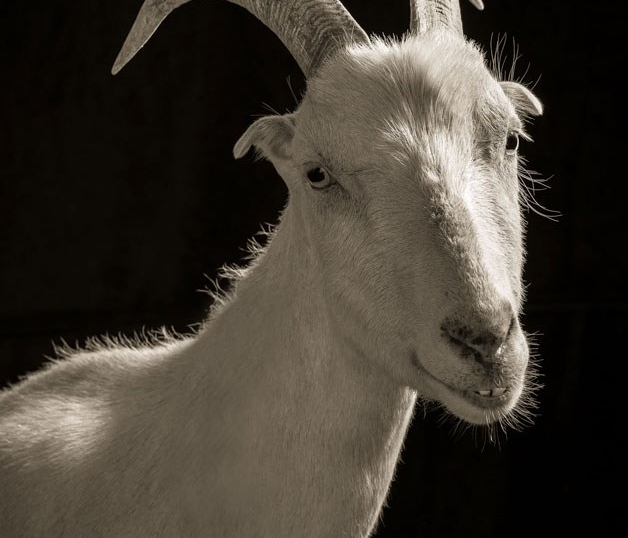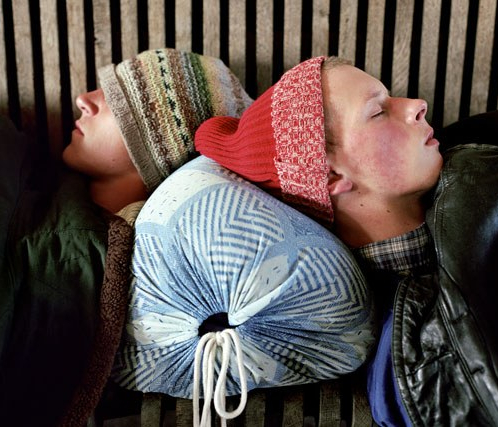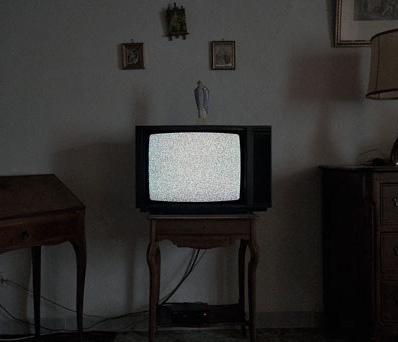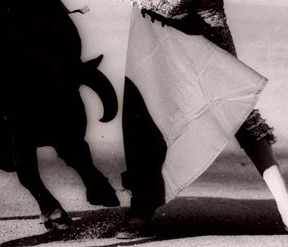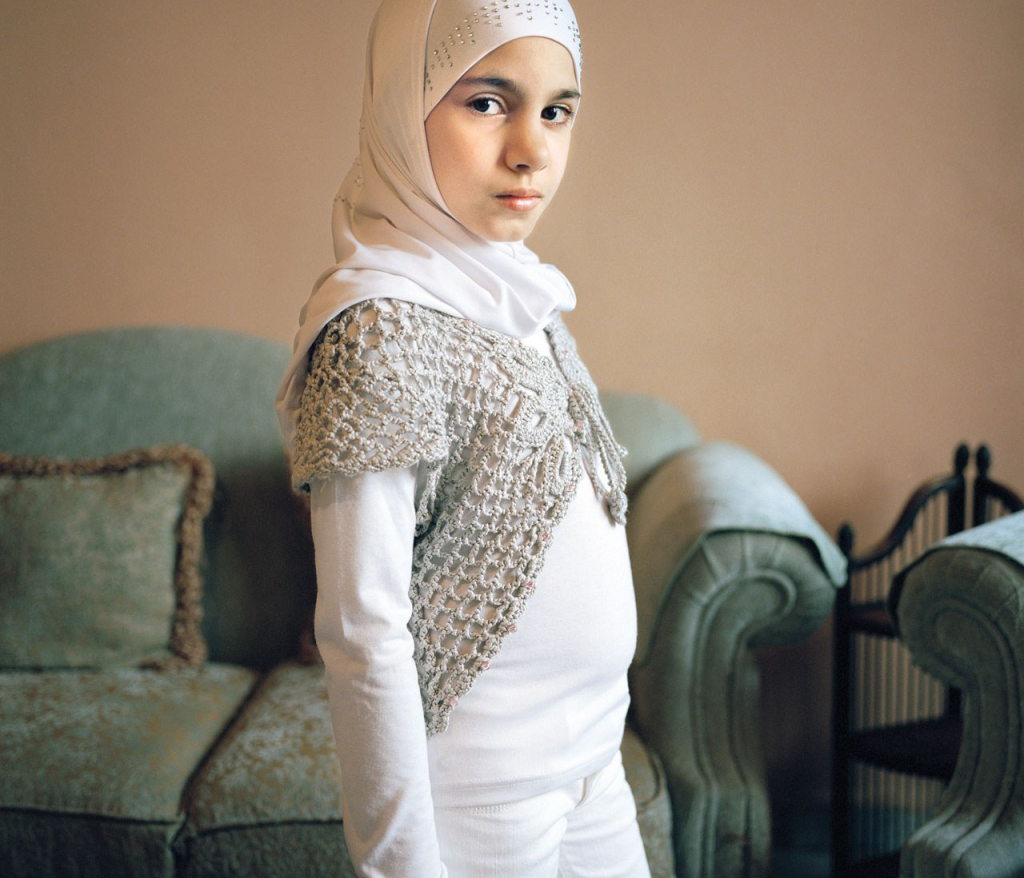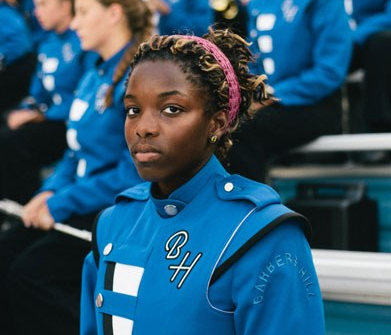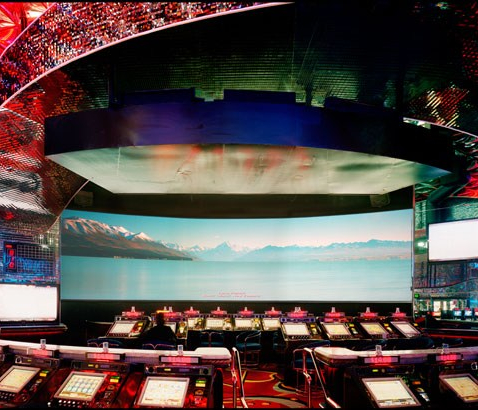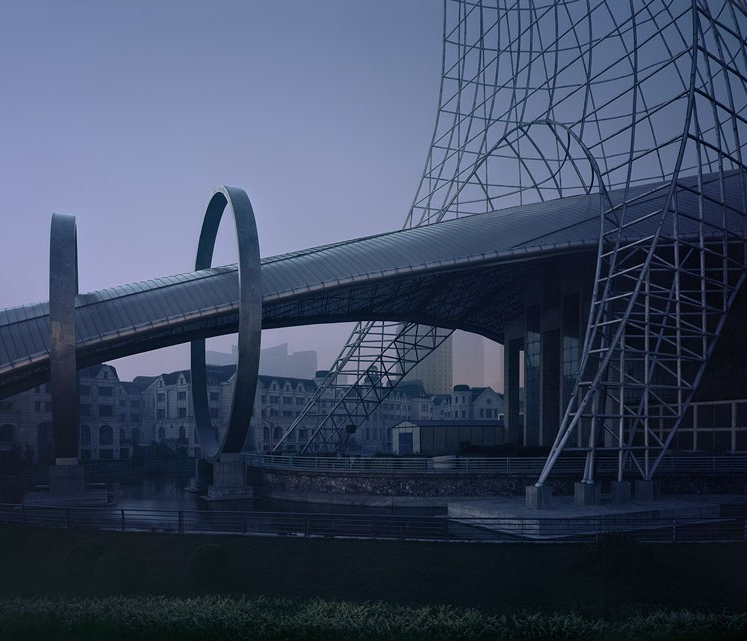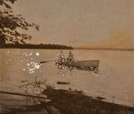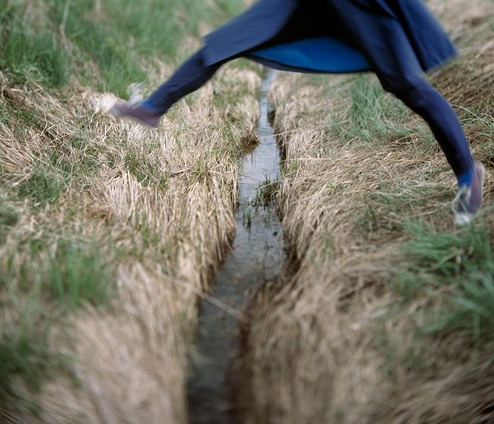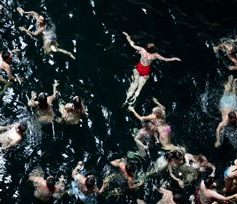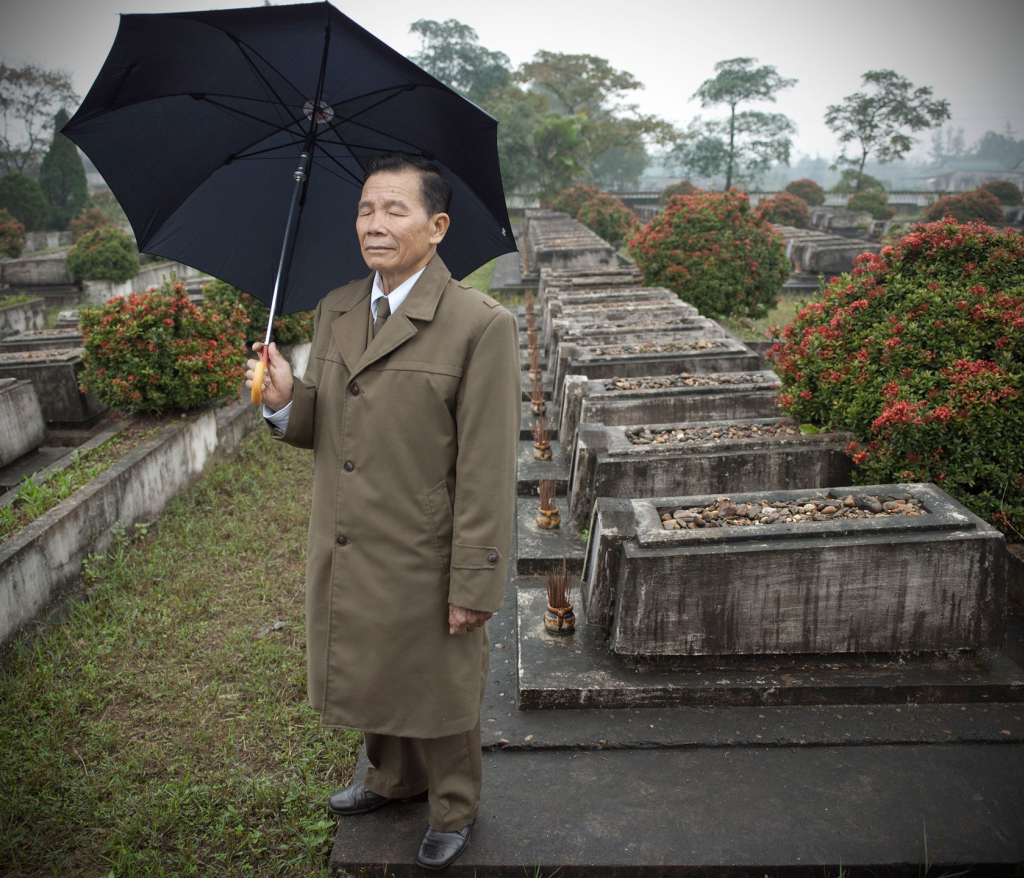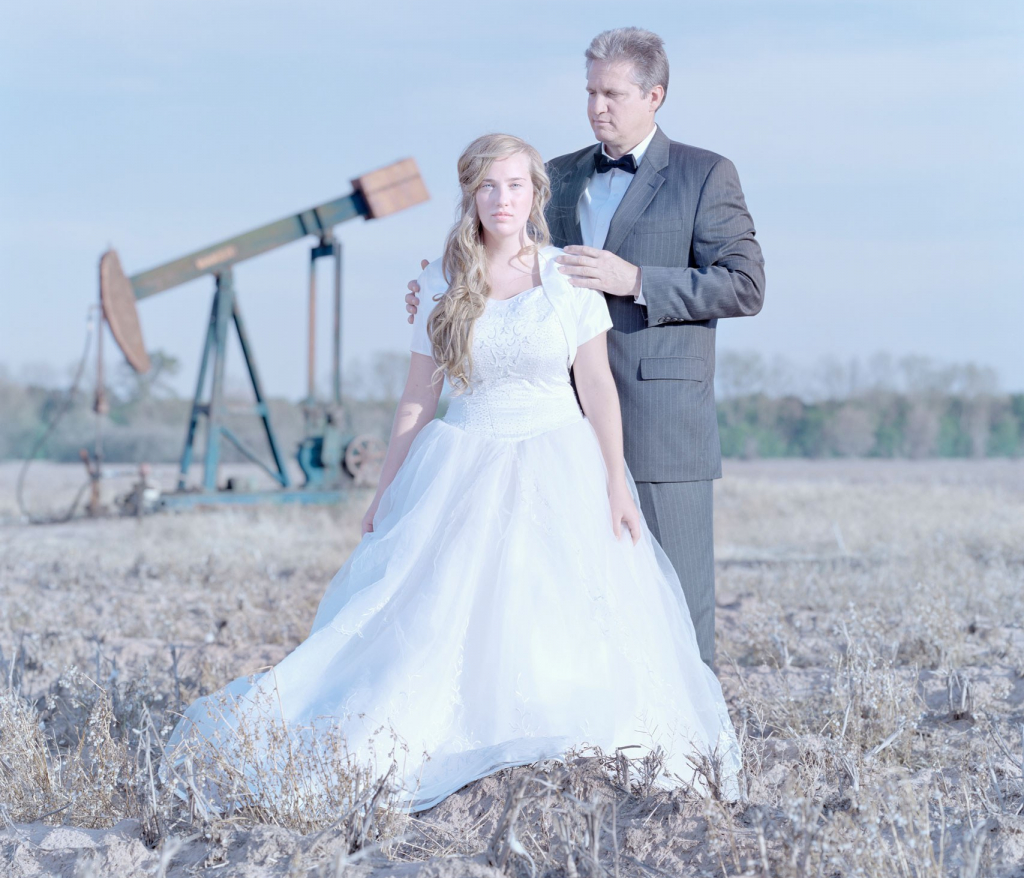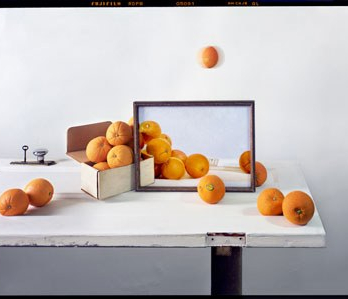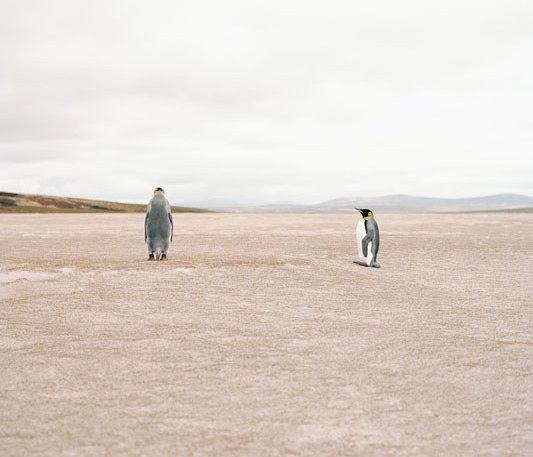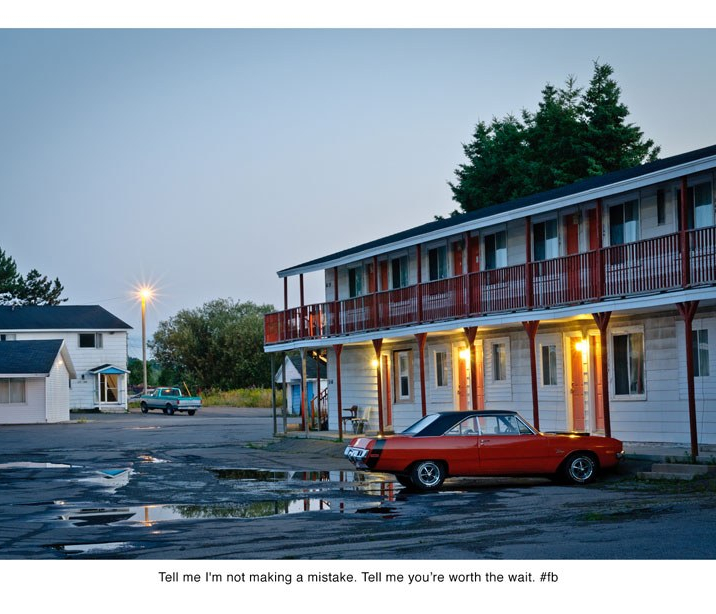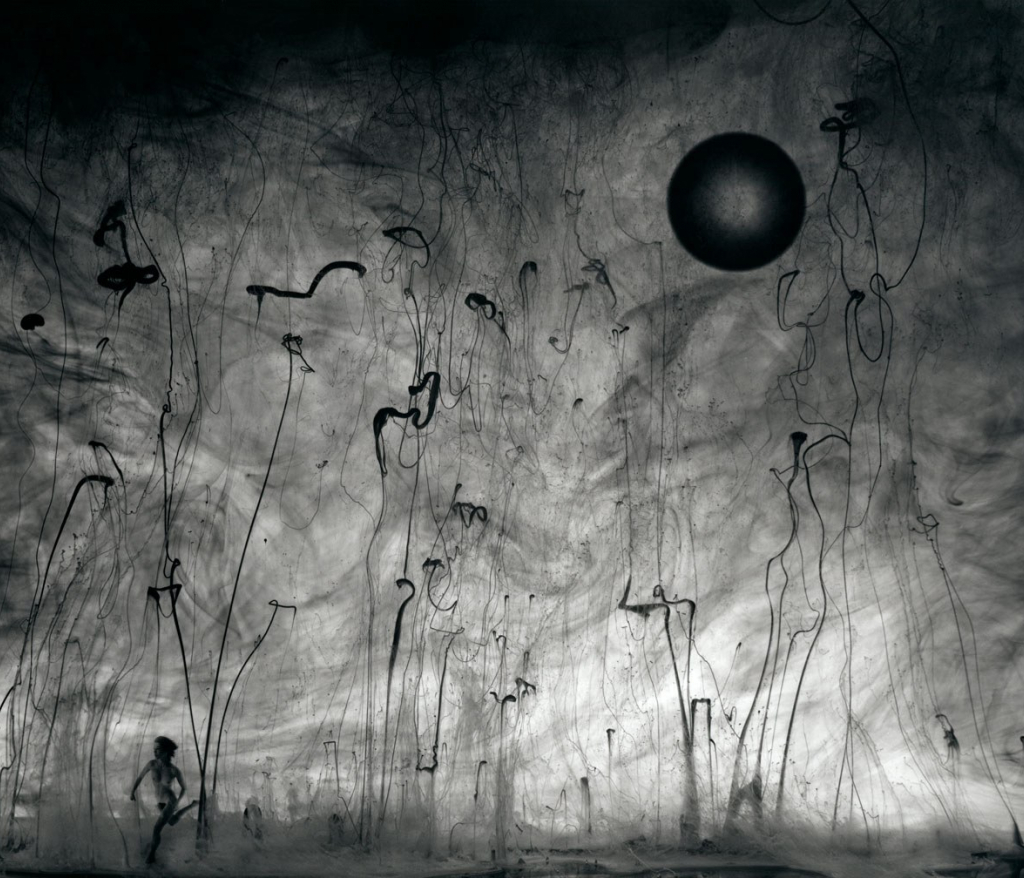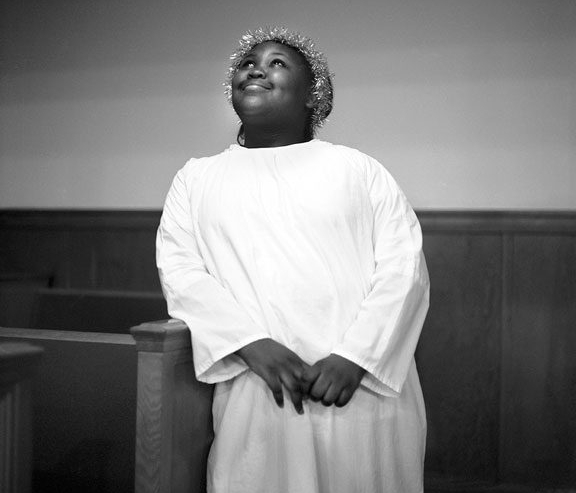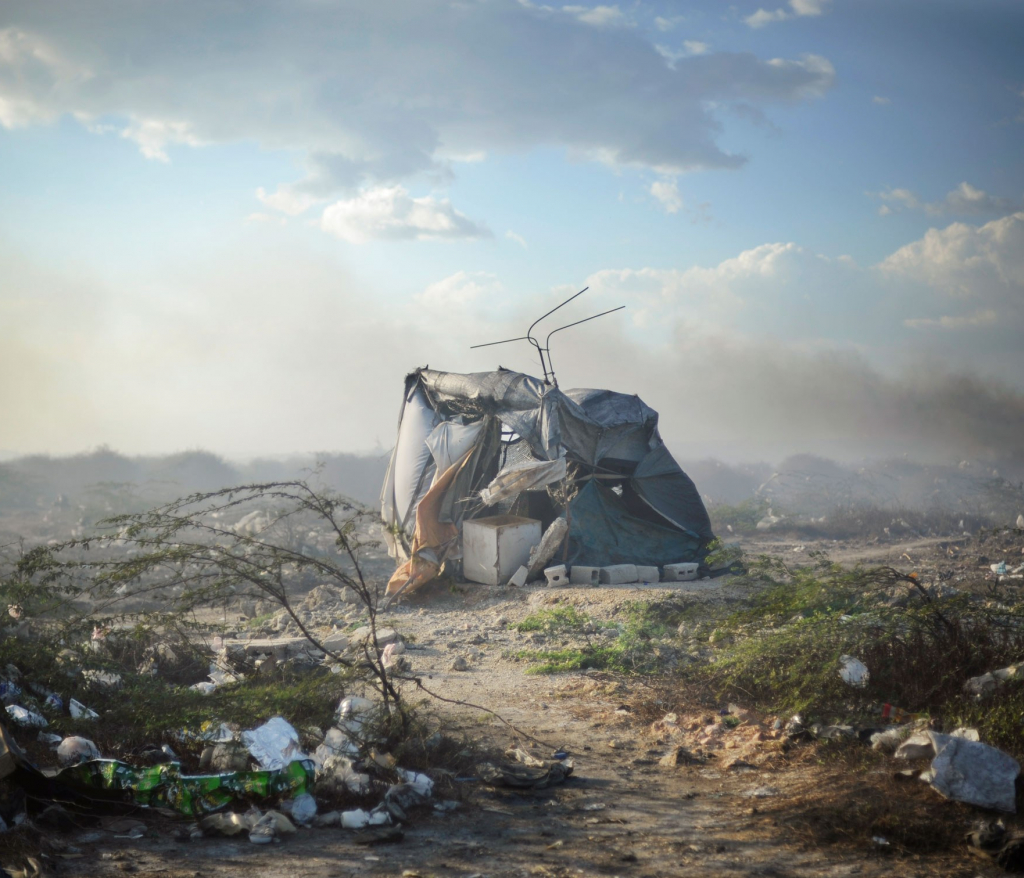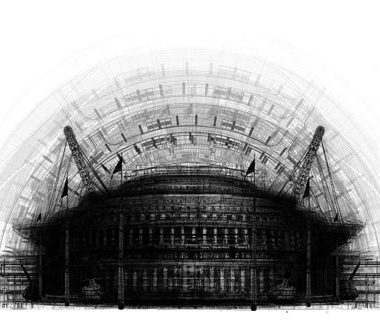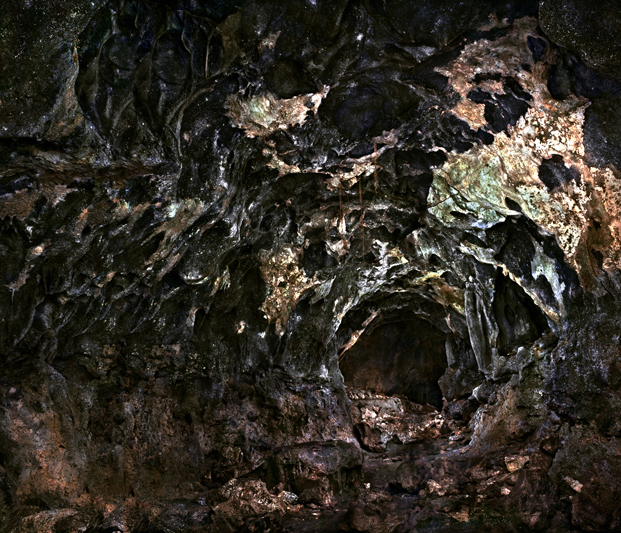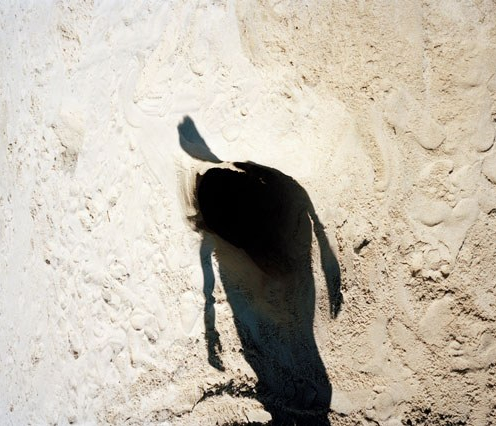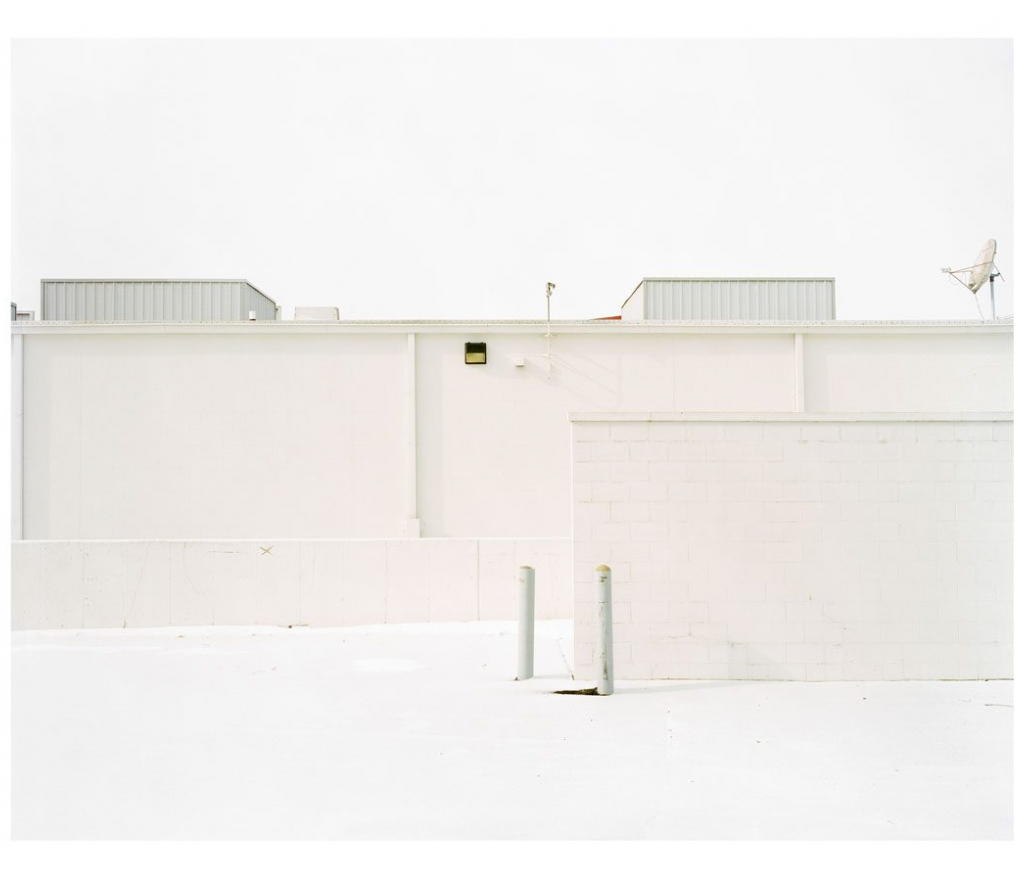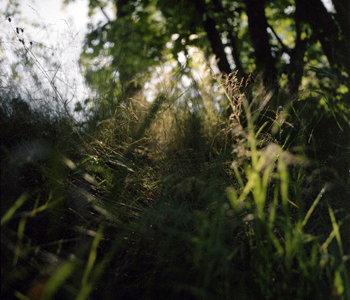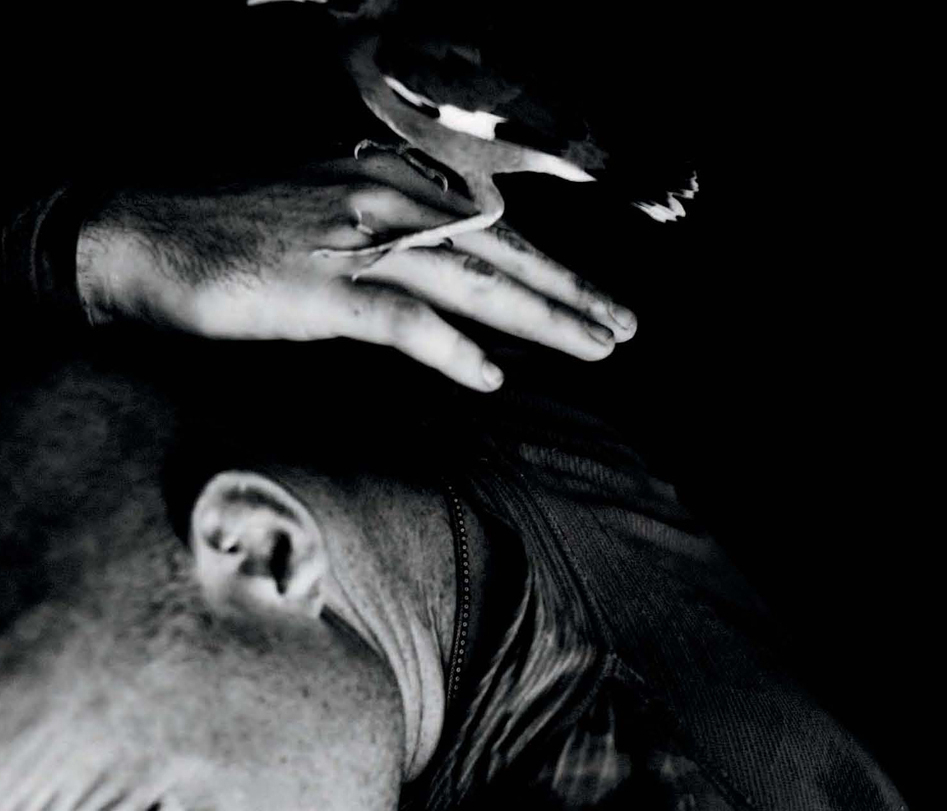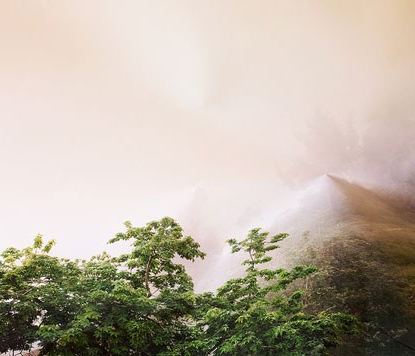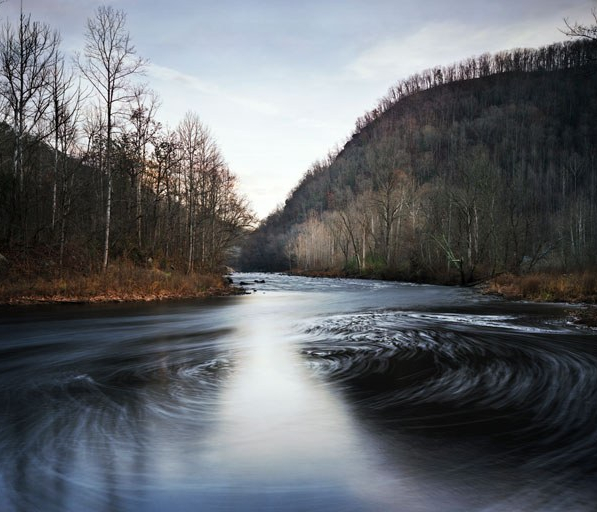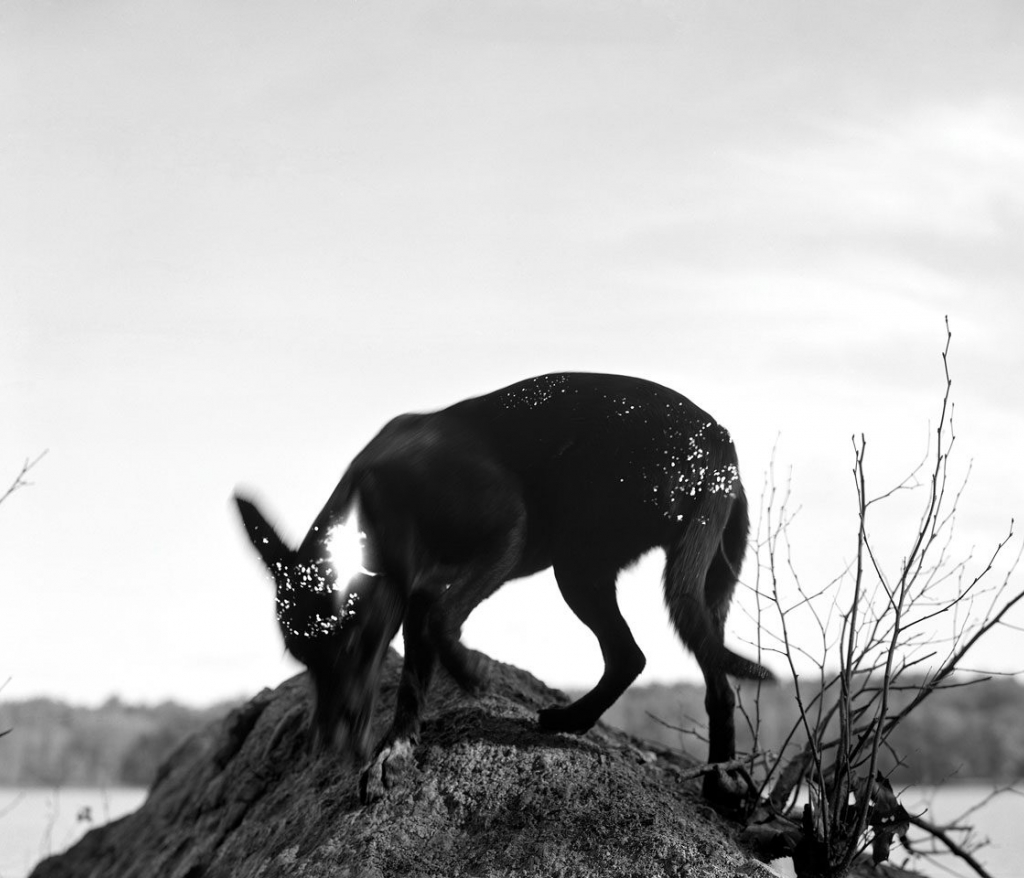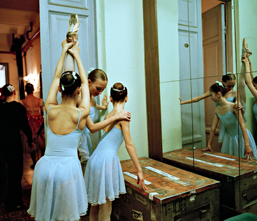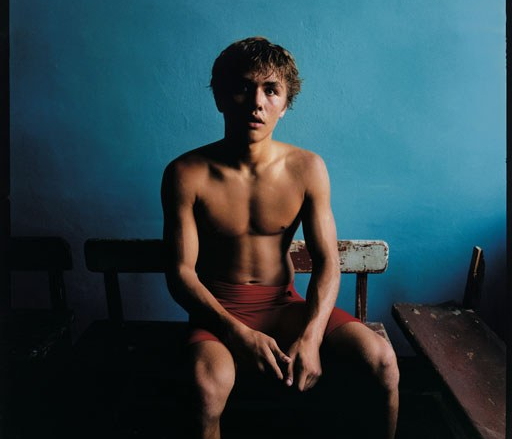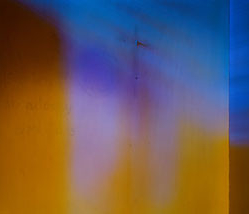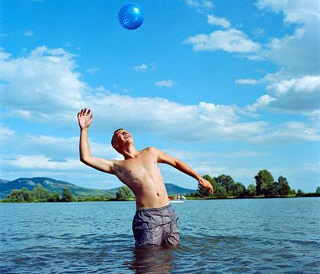Leigh Merrill
This Place
Leigh Merrill
This Place
Walking through Leigh Merrill’s exhibit is something like wandering around in a film set. The scenes feel almost real, but somehow not quite right. They are, in fact, constructed realities, expertly assembled from multiple sources. Merrill is the invisible producer, directing as if from the sky. She controls every detail, the pastel blocks of color, the very direction and quality of the light. She tinkers with the real world, seamlessly plucking elements from one place and depositing them elsewhere until the pictures are both familiar and placeless.
There are two distinct sets of images in the exhibit. The works move abruptly from the concrete realm of the architectural imagery, to large-scale prints that are a jungle of greenery. There’s no real space for humans in either set of images. In one world, she’s paved us out of the picture. In the other, we’re crowded out by plants.
Merrill offers a dose of nostalgia, but it is mixed with a sense of foreboding. Windows are papered, sidewalks erased, and viewers are often confronted by walls or impassable foliage. The images play to our appetite for nostalgia, for old signs, streetlights, diners, and elements of the past that we look at with longing. Along with the lure of color, the satisfying hidden details, and the artificially perfect space, there’s also a hint of something apocalyptic. This Place is one possible picture of the earth after humans. Perhaps it first looks like concrete remains, and then, eventually goes back to the Garden.
Familiar elements such as the lawn, manicured and manipulated plants, new buildings mimicking other eras and locations, often reveal a culture of perpetual longing. Elements of our constructed environments simulate, or reference other places and histories acting as evidence of desire. I often mix together real and fake in my work to create images of places and objects that challenge our expectations or reveal the simulacrum in our environments.
My process begins by making thousands of individual photographs while exploring a city or neighborhood. In the studio, I digitally assemble these sources to create photographs and videos of imaginary spaces. Some of the images have some veracity, but more often they suggest a visual hyperbole – an embellished scene circulating around a small detail or object that fascinated me. These composite images function as a metaphor to the ways in which desire and control is physically constructed in the landscape.
The source images for the pieces in This Place where shot in locations in the United States and Europe. By combining sources from a wide range of locations, there is no one regional architecture or landscaping that surfaces, rather the photographs echo a placeless location. The photographs of urban space are juxtaposed with images of digitally constructed botanical scenes. These juxtapositions play off one another both formally and conceptually.
Merrill is an American artist working primarily with photography. Merrill creates digitally collaged works that explore the veracity of the photographic image and perception in relationship to our contemporary landscapes. She received her Bachelor of Fine Arts from the University of New Mexico in Albuquerque, New Mexico and her Master of Fine Arts from Mills College in Oakland, California. Merrill’s work has been exhibited widely in venues such as the Phoenix Art Museum, the Fries Museum (Netherlands), diRosa Art Preserve, The Lawndale Art Center, FotoFest International, and the Museum of Texas Tech University. Merrill’s work has been included in publications such as the Washington Post, Design Observer/Places Journal, Dwell.com, BLDGBLOG blog, The Dallas Morning News, and Afterimage Magazine. Leigh Merrill resides in Dallas, Texas where she is an Assistant Professor of Art at A&M University-Commerce.
Leigh Merrill
This Place
Walking through Leigh Merrill’s exhibit is something like wandering around in a film set. The scenes feel almost real, but somehow not quite right. They are, in fact, constructed realities, expertly assembled from multiple sources. Merrill is the invisible producer, directing as if from the sky. She controls every detail, the pastel blocks of color, the very direction and quality of the light. She tinkers with the real world, seamlessly plucking elements from one place and depositing them elsewhere until the pictures are both familiar and placeless.
There are two distinct sets of images in the exhibit. The works move abruptly from the concrete realm of the architectural imagery, to large-scale prints that are a jungle of greenery. There’s no real space for humans in either set of images. In one world, she’s paved us out of the picture. In the other, we’re crowded out by plants.
Merrill offers a dose of nostalgia, but it is mixed with a sense of foreboding. Windows are papered, sidewalks erased, and viewers are often confronted by walls or impassable foliage. The images play to our appetite for nostalgia, for old signs, streetlights, diners, and elements of the past that we look at with longing. Along with the lure of color, the satisfying hidden details, and the artificially perfect space, there’s also a hint of something apocalyptic. This Place is one possible picture of the earth after humans. Perhaps it first looks like concrete remains, and then, eventually goes back to the Garden.
Familiar elements such as the lawn, manicured and manipulated plants, new buildings mimicking other eras and locations, often reveal a culture of perpetual longing. Elements of our constructed environments simulate, or reference other places and histories acting as evidence of desire. I often mix together real and fake in my work to create images of places and objects that challenge our expectations or reveal the simulacrum in our environments.
My process begins by making thousands of individual photographs while exploring a city or neighborhood. In the studio, I digitally assemble these sources to create photographs and videos of imaginary spaces. Some of the images have some veracity, but more often they suggest a visual hyperbole – an embellished scene circulating around a small detail or object that fascinated me. These composite images function as a metaphor to the ways in which desire and control is physically constructed in the landscape.
The source images for the pieces in This Place where shot in locations in the United States and Europe. By combining sources from a wide range of locations, there is no one regional architecture or landscaping that surfaces, rather the photographs echo a placeless location. The photographs of urban space are juxtaposed with images of digitally constructed botanical scenes. These juxtapositions play off one another both formally and conceptually.
Merrill is an American artist working primarily with photography. Merrill creates digitally collaged works that explore the veracity of the photographic image and perception in relationship to our contemporary landscapes. She received her Bachelor of Fine Arts from the University of New Mexico in Albuquerque, New Mexico and her Master of Fine Arts from Mills College in Oakland, California. Merrill’s work has been exhibited widely in venues such as the Phoenix Art Museum, the Fries Museum (Netherlands), diRosa Art Preserve, The Lawndale Art Center, FotoFest International, and the Museum of Texas Tech University. Merrill’s work has been included in publications such as the Washington Post, Design Observer/Places Journal, Dwell.com, BLDGBLOG blog, The Dallas Morning News, and Afterimage Magazine. Leigh Merrill resides in Dallas, Texas where she is an Assistant Professor of Art at A&M University-Commerce.

